
- Your browser does not support SVG Yacht & Sailing Boat Find out more
- Your browser does not support SVG Motor Cruiser Find out more
- Your browser does not support SVG Narrowboat & Barge Find out more
- Your browser does not support SVG Speedboat Find out more
- Your browser does not support SVG RIB Find out more
- Your browser does not support SVG Dinghy Find out more
- Your browser does not support SVG Personal Watercraft & Jet Ski Find out more
- Your browser does not support SVG Canoe, eFoil, Rowing Boat, SUP & Windsurfer Find out more

Policy Documents
Please see our policy documents for full details of the cover
- Narrowboat Living Discover life on the canals
- UK Marinas Safely store your vessel
- Yacht Lifestyle Get inspired with our resources
- New & Second Hand Boats For the ultimate buyer's guide
- Dinghy sailing in the UK Everything you need to know
- Motor Yachts and Cruisers What you need to know
- Jet Skiing in the UK A comprehensive guide
- Rigid Inflatable Boats (RIB) Learn all the essentials
- GJW Direct Boating Resources Discover our helpful resource page for useful tips and advice on all things boating!
- Quotation Process
- Making A Claim
- MyBoat by GJW Direct
- Miscellaneous
- Your browser does not support SVG Yacht & Sailing Boat Buy Now
- Your browser does not support SVG Motor Cruiser Buy Now
- Your browser does not support SVG Narrowboat & Barge Buy Now
- Your browser does not support SVG Speedboat Buy Now
- Your browser does not support SVG RIB Buy Now
- Your browser does not support SVG Dinghy Buy Now
- Your browser does not support SVG Personal Watercraft & Jet Ski Buy Now
- Your browser does not support SVG Canoe, eFoil, Rowing Boat, SUP & Windsurfer Buy Now
- Boats We Insure
- Get A Quote Online
.png)
- Yacht & Sailing Boat
- Motor Cruiser
- Narrowboat & Barge
- Personal Watercraft & Jet Ski
- Canoe, eFoil, Rowing Boat, SUP & Windsurfer
- Marine Insurance for Leisure Boats
- Narrowboat Living
- Yacht Lifestyle
- New & Second Hand Boats
- Dinghy sailing in the UK
- Motor Yachts and Cruisers
- Jet Skiing in the UK
- Rigid Inflatable Boats (RIB)
- GJW Direct Boating Resources
- Renew Your Policy
- Make A Claim
- Your Policy
How to Sail a Yacht: The Beginner's Guide to Yachting
Posted by: GJW Direct | Feb 9, 2022
How to sail a yacht: A beginner’s guide
Sailing a yacht isn’t, unfortunately, something you can master simply by reading an article. Like anything worth learning, it takes hard work, perseverance, and passion. There are, however, things you can do to prepare yourself before you take your maiden voyage. Here are our top tips for beginners looking to learn how to sail a yacht.
Talk to experienced sailors
The first step on your sailing journey should be to learn from the masters. If you’re not yet sure how to get started or want some insider tips, experienced sailors can help put you at ease. Make sure to ask questions and keep notes – you never know when that advice might come in handy.
Learn the basics
Before you even step aboard a yacht, there are some boating basics including words and terminology you should be aware of. This terminology may refer to parts of the boat that you’ll be responsible for operating or monitoring or may be vital safety or geographical information. To get you started, we’ve broken down the basics below
Yachting terminology
Port = Left of the yacht Starboard = Right Bow = The front of the yacht– the pointed end Stern = The back of the yacht – the wide end Main sail = The big sail Jib = The small sail at the front of your yacht Spinnaker = This is a large, triangular sail that is used to sail off the wind. It is situated between a downwind and a reach. Mast = The main beam holding up your sail Boom = Pole running at a right angle from the mast Line/sheet = Ropes used on board your yacht Knots = The metric used to measure your yacht’s speed and wind speed
There are plenty more terms you’ll need to get your head around, if you need more information – check out this handy A-Z guide. If you want to learn more about the types of yacht , and how much a yacht costs check out our guides.
Be a passenger
The best way to learn other than sailing is to be a passenger on board a yacht. While you’re still learning, get on the water as much as possible with more experienced sailors, observe them to understand the dynamics of a crew, how they handle challenges, and how you can apply that to your own sailing. You’ll also be able to see how all that terminology you’ve learnt works in practice and why it’s important to know before you set sail.
Get involved with your local yachting club
Once you’re ready, one of the best ways to get started in learning how to sail a yacht is to get involved with your local sailing or yachting club. They’ll be able to assess your current knowledge and competencies and set out a plan to get you out on the water. You’ll also be able to meet like-minded people and link up with potential future crew members. Want to find out more? Visit the Royal Yachting Association’s website to get started.
Preparing for your first voyage
Before you get on board, make sure you’re ready for your voyage – that means wearing the correct clothing – waterproofs and hats if required – and especially stocking up on suntan lotion if the weather outside looks warm. Read back your notes, and keep in mind everything you’ve learnt so far – but also be prepared for it all to go out of the window once that first wave hits!
Setting sail
On your first voyage, you’ll be with more experienced sailors who can coach you as you take off. Once you’ve stepped on board, your skipper will assign tasks. It’s vital that you listen to your role and understand what tasks you must take on during the voyage.
Before you set off, you’ll raise the main sail. At this point, the boom might swing from side to side so watch your head! Then, as you cast off, you’ll raise the jib which will help you control direction as you start sailing. Now you’re on the water, you’ll start to learn terms including trimming and tracking, which are methods of controlling and manipulating your sails to adjust speed and direction according to wind conditions. Now, let your sailing adventure commence!
Whether you’re a new yacht owner, or an experienced sailor GJW Direct yacht insurance offers comprehensive cover for a range of different vessels. Policies are subject to exclusions and limitations.

- Follow us on Twitter
- Follow us on Facebook
- Follow us on Instagram
Subscribe Here!
- Privacy Policy
- Cookie Policy
©2023 GJWDirect All rights reserved. Website Design by Fuelius
GJW Direct is an approved trading name of Munich Re Specialty Insurance (UK) Limited. Munich Re Specialty Insurance (UK) Limited is registered in England: 01262636, Union Suite 1a, 2-10 Albert Square, Manchester, M2 6LW. Authorised and regulated by the Financial Conduct Authority (FRN: 310539).
The information provided in this content is intended for prospective and existing GJW Direct policyholders.
Any description is for general information purposes only and does not constitute an offer to sell or a solicitation of an offer to buy any product. Policyholders who have questions or wish to arrange or amend cover should contact GJW Direct here.
Any descriptions of coverage contained are meant to be general in nature and do not include nor are intended to include all of the actual terms, benefits, and limitations found in an insurance policy. The terms of any specific policy will instead govern that policy. Any guidance for policyholders is intended to provide general information only, and should not be used as a substitute for legal advice.
- Setting sail: A beginner's guide to sailing a yacht
Sailing a yacht, with its billowing sails and the gentle sound of water against the hull, is an enchanting experience that beckons adventurers and dreamers alike. Whether you've always been drawn to the allure of the open waters or you simply seek a new and exhilarating hobby, setting sail on a yacht is an extraordinary journey that awaits you.
The allure of sailing
There's something truly captivating about sailing on a boat, where the wind becomes your guide and the vast expanse of the ocean becomes your playground. The sense of freedom and connection with nature is unparalleled as you navigate the waters, leaving behind the noise and haste of everyday life.
Preparing to sail
Before embarking on your sailing adventure, it's essential to make necessary preparations. Learn about weather conditions, tides, and navigational charts to ensure a safe and enjoyable voyage. Familiarize yourself with the yacht's equipment, safety protocols, and communication systems.
Understanding the basics of sailing
For beginners, learning the fundamentals of sailboat handling and terminology is crucial. Discover the various parts of a sailboat, such as the mast, rigging, sails, and rudder, and understand how they work together to catch the wind and propel you forward.
Read our top notch articles on topics such as sailing, sailing tips and destinations in our Magazine.
Steer with confidence: How to sail a yacht
Mastering the art of steering a yacht is both empowering and rewarding. Learn the techniques to control the sails, adjust the angle, and harness the wind's power to navigate your vessel smoothly and efficiently.
Hoist the sails: Sailing techniques for beginners
As a novice sailor, it's essential to explore different sailing techniques. Learn how to tack and jibe, sail upwind and downwind, and handle different wind conditions. Practice basic maneuvers until they become second nature, building your confidence on the water.
Navigating the waters: Where to sail
The world's oceans and waterways offer a vast array of sailing destinations. Discover scenic coastlines, picturesque islands, and hidden coves as you plan your sailing routes. Research the best sailing locations that suit your skill level and preferences.
Yacht at sea.
Safety first: Sailing precautions and best practices
Safety should always be a top priority when sailing a yacht. Familiarize yourself with life-saving equipment, emergency procedures, and safety checks before each voyage. Understand how to respond to unexpected challenges and ensure the well-being of yourself and your crew.
Weathering the storm: Dealing with challenging conditions
Mother Nature can be unpredictable, and weather conditions can change rapidly at sea. Learn how to interpret weather forecasts and respond to adverse conditions. Having the knowledge and preparedness to navigate through challenging weather ensures a safe and successful sailing trip.
Sailing gear and equipment: The essentials for your voyage
Investing in quality sailing gear and equipment enhances your comfort and safety on board. From life jackets and harnesses to navigational tools and communication devices, having the right gear ensures a smooth and enjoyable journey.
A smooth sail: Troubleshooting and problem solving
In the world of sailing, unexpected challenges may arise. Knowing how to troubleshoot common issues, such as tangled rigging or minor equipment malfunctions, empowers you to handle situations effectively and continue your voyage with confidence.
So you want to get into sailing?
If you're drawn to the world of sailing but don't know where to begin, seek out sailing schools, clubs, and organizations that offer introductory courses and sailing experiences. Engaging with the sailing community provides invaluable guidance and support as you embark on your sailing journey.
Making sailing accessible: Sailing schools and training
Sailing schools offer structured courses led by experienced instructors, providing you with hands-on learning and a comprehensive understanding of sailing techniques. Consider enrolling in a sailing course to acquire the skills and knowledge needed to sail with confidence.
Sailing community: Building connections and finding support
Joining a sailing community opens up a world of camaraderie and shared experiences. Connect with fellow sailors, participate in sailing events and regattas, and exchange tips and stories with like-minded individuals who share your passion for the sea.
The joy of sailing: An sdventure like no other
As you set sail and immerse yourself in the world of yachting, you'll discover the true joy of sailing. The sense of accomplishment, the thrill of mastering the winds, and the breathtaking vistas of the open sea create memories that will last a lifetime.
So what are you waiting for? Take a look at our range of charter boats and head to some of our favourite sailing destinations .
Faqs about sailing.
What are the common sailing terms I should know?
Brush up on basic sailing terms like port, starboard, bow, stern, tacking, jibing, and points of sail.
Can I sail a yacht alone or do I need a crew?
While experienced sailors may sail solo, it's advisable for beginners to have a small crew for safety and assistance.
Is sailing a yacht physically demanding?
Sailing can require some physical effort, but modern yachts and equipment make it accessible to people of various fitness levels.

- Find A School
- Certifications
- North U Sail Trim
- Inside Sailing with Peter Isler
- Docking Made Easy
- Study Quizzes
- Bite-sized Lessons
- Fun Quizzes
- Sailing Challenge

How Do I Learn To Sail?
By: Zeke Quezada, ASA Learn To Sail
Have you ever sat on a sandy beach, and looked out on the horizon, and been enamored at the sailboats beautifully and seemingly effortlessly gliding across the water? Do you schedule sunset sailing tours each time you go on vacation? Has the romance of sailing captured your heart in the pages of a book you were reading?
If so, maybe it’s time to put yourself more permanently on the boat, and we want to remove the barriers to entry for you if it’s seemed only but a daydream.
We will let you in on a secret: It’s pretty easy to start sailing.
We get the question all the time. “How do I learn to sail?”
First Things First: What’s it like to learn to sail?
The easiest way to start learning to sail today is with American Sailing’s Online Intro to Sailing course. It’s a high-level, step by step guide to what you will learn if you choose to make your sailing dreams a real lifestyle.
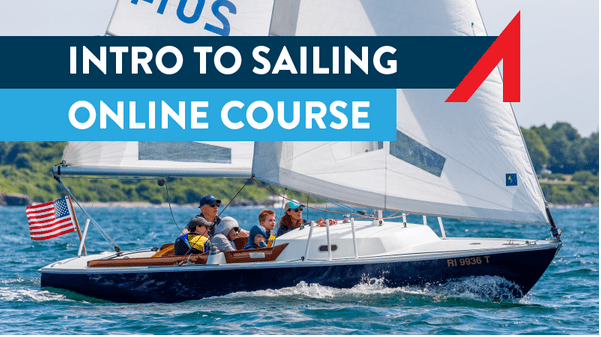
Next Steps: Frequently Asked Questions
- How do I get started learning to sail?
- How can I find a sailing school?
- What will I learn in ASA 101?
- How much does it cost to learn to sail?
- Do I need a boat to learn to sail?
- How long does it take to learn to sail?
- Do I have to sleep on the boat?
- Should I study before I take sailing lessons?
- What can I expect when I learn to sail with American Sailing?
How Do I Get Started Learning to Sail?
Taking ASA 101 – Basic Keel Boat Sailing.
This is step one in your journey to explore the world under sail. The foundation for all of your sailing education begins with this course.
ASA 101 – Basic Keel Boat Sailing
Able to skipper a sloop-rigged keelboat of approximately 20 to 27 feet in length by day in light to moderate winds (up to 15 knots) and sea conditions. Knowledge of basic sailing terminology, parts and functions, helm commands, basic sail trim, points of sail, buoyage, seamanship and safety including basic navigation rules to avoid collisions and hazards. Auxiliary power operation is not required.
The course is taken over anywhere from 2 to 3 days with plenty of on-the-water instruction to get you started and on your way to becoming a proficient sailor.
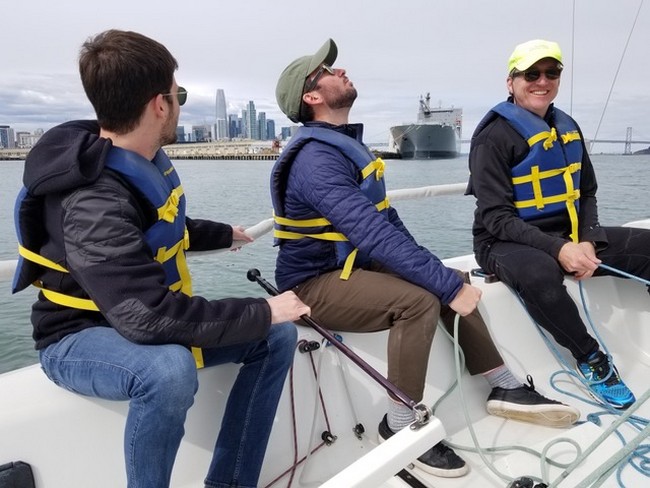
How Can I Find a Sailing School?
Start here: https://asa.com/learn-to-sail/
Everything you need to start sailing can be found on this page. All the resources to find the school nearest you as well as a description of the courses available from the American Sailing Association are right here. It is always important to understand that “Learning To Sail Is Just The Beginning.” Soon you will be planning bareboat charters and flotillas with your new sailing community.
Find a School

What Will I Learn In ASA 101?

When you finish ASA 101 Basic Keelboat Sailing, you will be able to skipper a keelboat. In other words, you will be a sailor. You’ll need to practice after that, but the foundation for your sailing education will be in place. Here are the details on what you will learn:
ASA 101 Basic Keelboat Sailing – What You’ll Learn
How Much Does It Cost To Learn To Sail?
Every ASA school is independently owned and operated; however, they all follow the same curriculum. Because of the various techniques and methodology with teaching this curriculum, prices for learning to sail packages vary depending on the school. Find a school that you want to attend here and compare costs and schedules.
You can check some prices on this page: How Much Does It Cost to Learn to Sail? It is always wise to find updated information and a schedule of classes with your own local ASA Sailing School.
Do I Need a Boat to Learn to Sail?

No. ASA schools teach you how to sail on their own adequately equipped sailboats. So don’t worry about buying your dream boat just yet. Learn the skills and then get out on the water with a sailing club or friends. Your sailing school will most likely have resources to help you get more time on the water without having to make the investment into a boat.
How Long Does It Take To Learn To Sail?

ASA 101 takes anywhere from 2 to 4 days, depending on the school, the instructor, and your schedule. Each school has a different approach and they each will utilize the ASA curriculum to teach the ASA 101 Basic Keelboat course.
However, you will always learn something on the water, even an old salt like Lenny Shabes, Founder of the American Sailing Association, still learns something new while sailing. Sailing is a lifelong adventure that will forever keep you on your toes while working on relaxation and your well-being.
Once you have earned your ASA 101 certification, you will be able to go out and use your skills. Take a look at Where to Use Your ASA 101 Sailing Skills .
Do I Have To Sleep On The Boat?

Your first sailing course does not require you to stay overnight on the sailboat. Well…unless you choose to do a multiday course where you learn a lot more over the course of a week. Plenty of new sailors find a school that teaches ASA 101, ASA 103, and ASA 104 as part of a sailing vacation. This option often is an excellent choice for families looking to learn to sail together while getting away as a group.
Should I Study Before I Take Sailing Lessons?

When you sign up for ASA Sailing lessons your sailing school will explain the process, but it is important to understand that knowledge is power. Sailing Made Easy and Let’s Go Sailing are two official manuals for ASA Sailing courses that are very good resources for the beginning sailor.
What Can I Expect When I Learn To Sail With American Sailing?
Take a look at these two first-person accounts of learning to sail with ASA:
Falling in Love with Sailing, 101 Steps at a Time

8 Things I Learned in ASA 101

Related Posts:

- Learn To Sail
- Mobile Apps
- Online Courses
- Upcoming Courses
- Sailor Resources
- ASA Log Book
- Bite Sized Lessons
- Knots Made Easy
- Catamaran Challenge
- Sailing Vacations
- Sailing Cruises
- Charter Resources
- International Proficiency Certificate
- Find A Charter
- All Articles
- Sailing Tips
- Sailing Terms
- Destinations
- Environmental
- Initiatives
- Instructor Resources
- Become An Instructor
- Become An ASA School
- Member / Instructor Login
- Affiliate Login

Boat Sailor
How to sail a boat: a beginner’s guide.
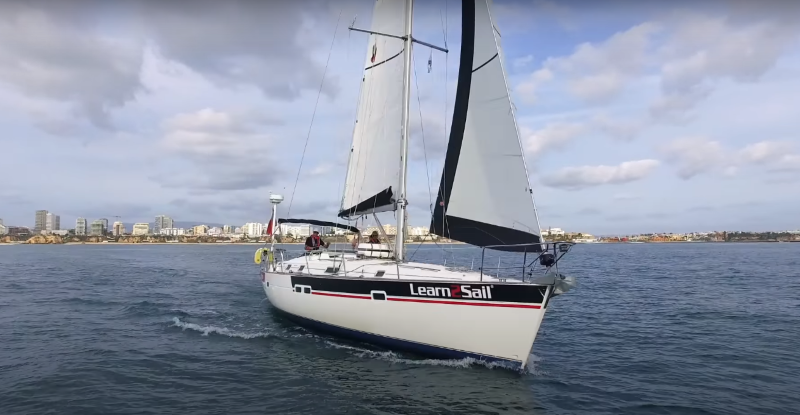
Sailing a boat is a thrilling and adventurous activity that allows you to connect with nature and harness the power of the wind. As a passionate sailor, I have spent countless hours navigating the open waters and honing my sailing skills. In this comprehensive guide, I will share my knowledge and provide you with valuable insights on how to sail a boat, whether you’re a beginner or looking to improve your sailing techniques.
Getting Started
Choosing the right boat.
Before you set sail, it’s crucial to select the right boat that suits your needs and experience level. Factors to consider include boat type, size, and whether you prefer a monohull or a catamaran. Beginners often find smaller boats easier to handle.
Safety First: Essential Gear and Precautions

Understanding the Basics
Parts of a sailboat.
To sail effectively, you must know your boat inside out. Learn the names and functions of essential components such as the mast, boom, mainsail, jib, and rudder. Understanding your boat’s anatomy will make handling it much easier.
Wind Direction and Sail Trim
One of the fundamental principles of sailing is harnessing the power of the wind. Grasp the concept of wind direction and how to adjust your sails accordingly for optimal performance. Proper sail trim is key to sailing efficiently.
Setting Sail
Preparing the boat.
Before setting sail, inspect your boat for any issues or malfunctions. Check the rigging, lines, and sails for wear and tear. Ensure everything is in working order to avoid surprises on the water.
Hoisting the Sails
Learn how to hoist your sails properly. Each sail has a specific procedure for raising it, and knowing these steps is crucial for a successful journey. Take your time to practice until you can do it with confidence.
Steering and Navigation
Using the tiller or wheel.
Steering a boat may seem simple, but it requires finesse. Understand how to use the tiller or wheel to control the direction of your vessel. Practice maintaining a steady course to avoid oversteering.
Navigating with Charts and GPS

Sailing Techniques
Tacking and jibing.
Changing direction while sailing involves two primary maneuvers: tacking and jibing. Master these techniques to navigate efficiently and safely. Tacking involves turning your boat into the wind, while jibing involves turning away from the wind.
Upwind and Downwind Sailing
Understanding the difference between upwind and downwind sailing is essential. Learn how to adjust your sails and trim for optimal performance in each situation. Upwind sailing requires a different approach than downwind sailing.
Handling Wind and Weather
Reading the wind.
To become a skilled sailor, you must develop the ability to read the wind. Pay attention to wind indicators on your boat and the behavior of the water. Understanding wind patterns is essential for successful sailing.
Dealing with Changing Weather Conditions
Weather can be unpredictable, and sailors must be prepared to adapt. Learn how to respond to changing weather conditions, including sudden storms and shifting winds. Safety should always be your top concern.
Anchoring and Mooring
Dropping anchor.
Anchoring is a skill every sailor should master. Learn how to choose the right anchor for your boat and how to drop it securely. Anchoring allows you to rest, swim, or explore when you’re not under sail.
Tying Up at a Dock
Docking can be challenging, especially in tight spaces or strong currents. Practice your docking skills to avoid collisions and ensure a smooth arrival at your destination.
Maneuvering in Tight Spaces
Docking techniques.
Docking in crowded marinas or tight spots can be nerve-wracking. Learn techniques such as spring lines, bow thrusters, and pivot points to maneuver your boat gracefully in confined spaces.
Avoiding Collisions
Safety on the water includes avoiding collisions with other boats, structures, or underwater hazards. Understand the right-of-way rules and maintain situational awareness to prevent accidents.
Safety on the Water
Man overboard drills.
In emergencies, knowing how to perform a man overboard rescue is crucial. Practice man overboard drills with your crew to ensure a quick and effective response in case someone falls overboard.
First Aid and Emergency Procedures
Be prepared for medical emergencies by having a well-stocked first-aid kit on board. Learn basic first-aid procedures and emergency communication methods to handle unexpected situations.
Maintenance and Care
Cleaning and maintaining your boat.
Proper maintenance ensures your boat stays in top condition. Regularly clean and inspect your boat, including the hull, rigging, and engine, to prevent wear and damage.
Winterizing Your Sailboat
If you live in a region with cold winters, learn how to winterize your sailboat to protect it from freezing temperatures and ice. Proper winterization is essential for preserving your boat.
Improving Your Skills
Sailing courses and resources.
Continuous learning is key to becoming a proficient sailor. Consider enrolling in sailing courses, reading books, and watching instructional videos to enhance your skills.
Practicing Seamanship
Experience is the best teacher in sailing. Spend as much time as possible on the water to refine your seamanship skills. Practice makes perfect, so don’t hesitate to take your boat out frequently.
Sailing Etiquette
Right of way rules.
Understanding right-of-way rules is crucial for safe and respectful sailing. Always yield to vessels with the right of way and follow established maritime etiquette.
Respecting the Environment
Sailors should be stewards of the sea. Dispose of trash properly, avoid disturbing marine life, and be mindful of the environmental impact of your activities.
Enjoying the Journey
Sailing is not just about reaching a destination; it’s about enjoying the journey. Explore different sailing destinations, immerse yourself in the beauty of nature, and create lasting memories with your fellow sailors.
Sailing a boat is a remarkable experience that offers a sense of freedom, adventure, and connection with nature. By following the steps and tips outlined in this guide, you can embark on a rewarding journey to becoming a skilled sailor. So hoist your sails, catch the wind, and let the open waters lead you to new horizons.
How long does it take to learn how to sail a boat?
Learning to sail varies from person to person, but with consistent practice, you can acquire basic sailing skills in a few weeks. Mastery comes with time and experience.
What’s the best way to prepare for sailing in rough weather?
Check weather forecasts before sailing, have appropriate safety gear, and be prepared to reef your sails (reduce their size) to handle strong winds. It’s also wise to stay informed about changing weather conditions while on the water.
Can I sail alone as a beginner?
It’s advisable for beginners to sail with experienced sailors or take sailing courses to build confidence and knowledge. Solo sailing is best attempted after gaining experience.
Are there any age restrictions for learning to sail?
There are no strict age restrictions for learning to sail, but children should be supervised, and some courses may have minimum age requirements. Sailing is a sport suitable for people of all ages.
What are some must-have items to keep on board while sailing?
Essential items include life jackets, a first-aid kit, a VHF radio, a navigation chart or GPS device, spare lines, and a basic tool kit. Always ensure you have enough drinking water and snacks on board as well.

Michael Thompson
Embarking on a lifelong love affair with the sea, I found solace and exhilaration in the art of sailing. From navigating treacherous waters to harnessing the wind's untamed power, my passion has evolved into a mission to inspire others. Join me on a voyage of discovery as we explore the vast horizons of sailing's timeless allure.
More to Explore

Spiridakos Sailing Cruises: An Unforgettable Adventure
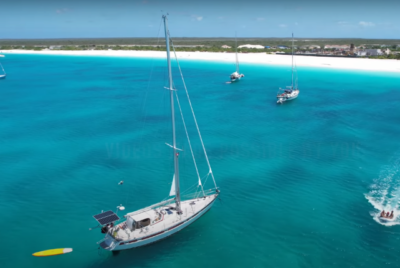
Sailing in the Caribbean
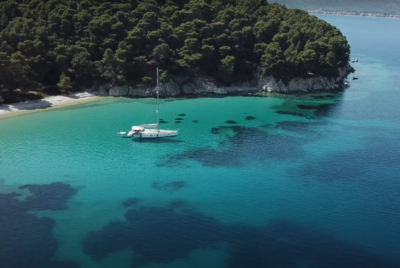
Sailing Greek Islands
- Search Please fill out this field.
- Newsletters
- Water Sports
A Beginner's Guide to Sailing a Sailboat
Key Information for Beginners and Sailors
There are many ways to learn to sail:
- You can just jump in a boat with a friend and try to learn from experience
- You can sign up for a formal course at a sailing school
- You can buy or borrow a small sailboat and do it all on your own
No matter which way works best for you, it helps to understand the boat and what's involved in sailing first before you're out on the water, where suddenly you might get into trouble.
The Basic Steps of Sailing
Sailing involves both specific knowledge and skills. The following are the basic steps of learning to sail- as much as you can learn while not actually on a boat. You don't have to follow this order; skip ahead if you already know some of the basics. If you're mostly new to sailing, you might want to proceed through these steps like chapters in a manual.
- Understand Basic Sailing Terms. To get into sailing, you have to understand the words that are used to talk about the sailboat and the skills used to sail. Start here with a review of basic sailing terms. Don't worry about memorizing everything as many of these terms and concepts will become clearer as you read on about how to do it.
- Learn the Parts of the Boat. Before you go on the boat, it's helpful to know the words used in different parts of the boat. Even if you have an instructor, he or she won't say "Grab that rope over there and pull it," but instead will say "Haul in the jib sheet!" Review the basic boat terms you'll need to know.
- Start an Online Course. Now you're ready to learn more about what all those parts of the boat are used for. Here you can start an online learn-to-sail course by learning more about the parts of the boat along with a lot of photos, so you'll see what to do.
- Rig the Boat. Read to go sailing now? Hold it a minute- you have to rig the boat first by putting on sails and making other preparations. Here again are a lot of photos of what to do on a typical small sailboat used by beginners.
- Review Basic Sailing Techniques. OK, now you have the boat ready- so what do you do now to make it go? Manage the sails to go in the direction you want by learning basic sailing techniques.
- Discover How to Maneuver. Sailing in a set direction is reasonably easy, but eventually, you'll have to change direction. That often involves tacking and gybing. Take a moment to learn what's involved in these critical maneuvers.
- Recover From a Capsize. Now you've got the basics down. But did anyone ever tell you that small sailboats often tip over if the wind is gusting? Be prepared and carefully see how to recover from a capsize .
- Dock or Anchor the Boat. Now you're out there sailing and you've got the boat under control. Learn how to go faster, dock or anchor the boat and use some of the equipment you've ignored so far. Take a look at some of these additional sailing skills.
- Practice Tying Knots. For thousands of years, sailors have used times where it is cold or raining by doing things like tying knots. Knots are important on a sailboat and you will need to learn at least some basic sailing knots to sail at all.
- Sail Safely. At this point, plus practice on the water, you're good to go. However, it's good to remember that water is a dangerous place. Learn the basics about sailing safety. Staying safe makes it easier to keep having fun out there.
Related Articles
More related articles.

The 5 Best Sailboats For Beginners

Last Updated by
Daniel Wade
December 27, 2023
Sailing is a fun activity for people of all experience levels. In fact, learning to sail a basic boat is relatively easy—in the right environment, you can start cruising with minimal experience.
However, the idea of a beginner commanding a 55-foot ketch in the middle of the Atlantic Ocean is a bit ridiculous. Even though virtually everyone can sail, beginners should learn the basics in a controlled environment—and on the correct boat.
Boat size doesn’t necessarily affect its beginner-friendliness, because sailors need to take into account factors such as rig simplicity and handling characteristics.
Many beginners make the mistake of picking the wrong boat to begin with, which can lead to frustration and turn them off of sailing forever.
To mitigate these issues, this article will cover the best sailboats for beginners —so you can get on the water and start sailing safely and comfortably.
Table of contents
Best Rigs for Beginners
There are many types of sailboat rigging , and some are more beginner-friendly than others. Unfortunately, some of the most aesthetically pleasing rigs are also the most complicated.
Eventually, sailors can acquire enough skill to master complex rigs, but it’s best to start simple.
Arguably, one of the simplest sailing rigs is the Lateen Rig. This rig consists of a mast, boom, and spar, along with a single halyard and mainsheet. With only two ropes in its simplest configuration, the Lateen Rig makes an excellent starter sailboat, and it will be featured on this list.
For larger boats, the Bermuda Sloop rig is an excellent choice. This rig is quite common and includes a jib for a larger sail plan.
For those who desire a slightly more robust (but single sail) layout, the gaff-rigged catboat is also an excellent choice. This versatile craft (and rig) has a large and relatively simple single sail, which is easier to handle than multiple sails.
Top Five Sailboats for Beginners
Now, we’ll go over the top five sailboats for beginners . These boats will descend in order from smallest to largest, but not by the level of experience needed.
Remember, just because you’re new to sailing doesn’t mean you have to settle for a boat that’s too small. Beginners can handle larger boats with some training, and some are easier to handle than their smaller counterparts.
The following boats were chosen because of their handling characteristics, low cost-of-ownership, and simplicity, as all of these factors are important for choosing the best beginner sailboat.
5) Sailing Dinghy
The sailing dinghy is the quintessential starter sailboat. These tiny, lightweight, popular, and highly affordable little craft is easy to operate and relatively difficult to capsize. The popular Optimist Sailing Dinghy, while designed for children up to the age of about 15, can be used (sometimes hilariously) by adults as well. An Optimist-style dingy is a great option for beginners over the age of 15, as boats of this style can be found in a variety of sizes. The sailing dinghy is a very popular youth racing sailboat, especially in the United States and the United Kingdom. While it’s not particularly fast, this little boat has wonderful handling characteristics and is relatively difficult to capsize. This open-cockpit boat uses a centerboard and detachable tiller and can be beached or carried atop a car without much hassle. The mast is removable, and all parts are easily stowed. Overall, the Optimist and its copycats are a remarkable little craft, equally useful as a tender for a larger boat or a standalone beginner sailboat.
Dinghy rigs vary between builders, but many use the simple Spirit Rig. The rig consists of a single sail and mainsheet, along with one mast, boom, and spar. The leech is stiffened by battens, and ties along the luff secure it all to the mast. Hoisting and securing the rig is easy, and lines are secured to the boat by a cleat. This simple rig has plenty of sail area for most places, and sailors can secure the mainsheet to a block or simply hold it in their hands.
The price of sailing dinghies can vary widely depending on multiple factors. Professionally-made sailing dinghies start around $3,500 new, and plywood kits are available for around $1,000 to $2,000. Used dinghies (including Optimist sailing dinghies) can be found on Craigslist for as low as a few hundred dollars.
{{boat-info="/boats/vanguard-sunfish"}}
The Sunfish is a brilliant little sailboat, and a very fast boat indeed. This little racing dinghy, while only 13 feet in length, can be an enormous amount of fun for beginners and experienced sailors alike. The best way to describe the handling of a Sunfish is, ‘tender,’ though it’s not difficult to master this little boat. For its size, the Sunfish has a relatively large sail area and a very shallow draft. This boat has a small cockpit and can be controlled easily by a single person. The large sail plan of the Lateen-Rigged Sunfish makes for excellent performance in light winds and amazing speed on windy days. The Sunfish is a lightweight fiberglass boat with a simple rig and is a great step-up from a sailing dinghy. It’s possible to learn how to sail on this boat, but every sailor who’s spent time on a Sunfish will probably recommend bringing a towel. The boat is relatively easy to capsize for beginners and it heels aggressively, but these characteristics can teach sailors some important lessons. The heeling characteristics of the Sunfish can help beginners get accustomed to the feeling and help them understand the limits of a sailboat and how to avoid capsizing.
The Sunfish features a Lateen Rig, which has some shared characteristics with the simple Spirit Rig. The Lateen Rig has a single spar, mast, and boom, and is easy to set up and dismantle. The mast is removable as well, making stowing and transportation relatively easy. The large sail plan of the Sunfish makes it ideal for lakes and other areas where the wind is sporadic or very low, and the boat can be safely handled in many conditions. The boat is great for racing and learning and is also available in a Bermuda rig. The Sunfish is recognizable by the distinctive fish logo in the top corner of the sail, and the classic rainbow sails striping.
The Sunfish is still commercially manufactured. You can purchase one new from the factory for around $5,000 today, and options are available to make the boat your own. While the boat is designed to be sailed by a single person, two adults can purchase this boat and use it together comfortably. Used Sunfish prices vary, but a fully-outfitted boat in good condition can cost upwards of $1,000. They hold their value well, and they’re a great choice for beginners.
{{boat-info="/boats/vanguard-laser"}}
The Laser is considered by many to be the Sunfish’s main competitor. The two boats are the same length (13 feet 9 inches) and share many of the same handling characteristics. However, the boats do have some notable differences. Many people consider the Laser to be a step-up from the Sunfish in difficulty, as the boat handles much more like a racer. The Laser has been used in the Olympics for racing. The laser is small and simple enough for beginners but requires skill to operate. Beginners can learn a lot from sailing a Laser and have an enormous amount of fun in the process. This fast little boat is simple and easy to set up but handles like a racecar. If you’re a beginner on a laser, you’ll probably capsize at some point—which isn’t always a problem if you’re in a controlled environment, as the boat can be righted easily.
The laser is a Cat Rigged boat. This means it has only one mainsail and no headsails. The simple rig has a mast and a boom and is very easy to set up. The sail area of the laser is relatively large and designed for speed in high winds. The rig combined with the overall design of the sailboat makes it handle tenderly, which may be off-putting to some beginners. Regardless, it’s still a blast to sail for beginners with some experience.
New Laser sailboats start around $6,000 which is slightly more than the Sunfish. This simple centerboard cruiser is constructed as a race boat, which can explain some of the price increase. Used Laser sailboats are available on the market, though usually not as common as the Sunfish. Used Laser prices vary widely.
2) Gaff-Rigged Catboat
The gaff-rigged catboat isn’t a brand of boat—it’s a style of a sailboat that was once a popular workboat on the New England coast. This boat, which has only one mainsail and no headsails, is available in a wide range of designs. Catboats are famous for their handling and power and make a great sailboat for beginners. These vessels are available with centerboards, keels, cabins, and in open designs. Most catboats range from 15 to 19-feet long and can be built from wood or fiberglass. Catboats are easy to handle, and one who learns on a small catboat can easily transition to a larger one. Besides being one of the most easily recognizable sailboats, catboats are also some of the most versatile. A catboat can be just as suitable for lake cruising as it is for coastal waters.
The most common type of catboat rig is the Gaff Rig. This classic and robust rig is more complex than the simple Spirit and Lateen rig, but it’s more suitable for a ‘proper ship.’ The Gaff Rig can provide similar power as an equivalent Bermuda Rig, with much more elegance and a shorter mast. Many sailors prefer the classic Gaff Rig for its handling characteristics and durability.
It’s impossible to specify the price of catboats because they vary so much in design and size. New catboats (between 15 and 25-feet) can be purchased for less than $20,000, and used boats are numerous and varied. Cabin catboats tend to cost more, especially new—some run for more than $50,000 with a high level of amenities, including a head and galley. Numerous catboat plans are available online, and sailors report constructing them (usually of plywood) for just a few thousand dollars.
1) West Wight Potter 19
{{boat-info="/boats/west-wight-potter-19"}}
The West Wight Potter 19 is a fiberglass sailboat designed for safety, easy handling, and beginner-friendliness. This 19-foot trailer-sailor features a cabin with a vee-berth, a simple rig, and a retractable keel. The West Wight Potter 19 could potentially be the best cabin sailboat for beginners, and certainly one of the safest—the West Wight Potter 19, according to the manufacturer, is quite literally unsinkable. The hull is filled with buoyant materials, allowing the boat to be flooded and remain afloat. However, unsinkability isn’t the only characteristic of this boat that makes it ideal for beginners. The rig is simple and easy to set up, and the handling characteristics are excellent. The boat is not prone to aggressive heeling and handles confidently in a variety of conditions. While one generally wouldn’t consider it to be a blue-water cruiser, it’s still extremely capable—one sailor even sailed this vessel from California to Hawaii , which is over 2,000 nautical miles. The theoretical hull speed of this boat is around 5.4 knots, but it actually has a tendency to plane and achieve higher speeds. It’s a flat-bottomed cruiser, making it easy to beach and transport with its retractable keel and removable rudder. The West Wight Potter 19 is a great introduction to large sailboats and carries amenities normally reserved for boats at least 1/3 larger.
The West Wight Potter 19 is a Bermuda-Rigged sloop. The sail plan is sufficiently large to propel the boat in a variety of conditions, but not so large that it overpowers the boat. Sailors can single-hand the boat with ease, and set up and takedown are easy and require no special tools. The boat handles well in a variety of conditions and is well-known for its superior stability. The rig comes apart easily and can be stowed and trailered by one person.
The West Wight Potter 19 has been produced and sold commercially since the 1970s, and the used market has plenty of boats available, generally starting around $5,000. New West Wight Potter 19 sailboats are remarkably affordable compared to other boats with comparable characteristics. The West Wight Potter 19 is manufactured by International Marine in California. New sailboats start at just shy of $25,000. Owners can add an enormous range of extra features to their boats, including a hull-strengthening ‘blue water’ package, a stove, a head, electrical power, spare parts, and much more. The boats are highly customizable and can be outfitted for weekender sailing or long-term liveaboard cruising.
How to Pick a Sailboat
Picking a sailboat for beginners doesn’t have to be difficult. Before deciding on a boat, consider your experience level and location.
If you only have access to rough ocean, it may not be the best idea to get an open dinghy.
If you live near a lake, a Sunfish could be a great way to start.
Also, consider your budget. If you’re looking for a $50 sailboat, you can probably find one, but it won’t be ideal.
If you have just a few thousand dollars to spend, you can set yourself up nicely with a little research .
Also, consider what you want to do with the sailboat. Recreation, fishing , cruising , and exploration are options, and require different kinds of boats.
Whichever you end up choosing, make sure you try it out and can sail it comfortably.
Related Articles
How To Buy A Beginner Sailboat
Sail Maintenance For Beginners
Can a Novice Sail Around the World?
I've personally had thousands of questions about sailing and sailboats over the years. As I learn and experience sailing, and the community, I share the answers that work and make sense to me, here on Life of Sailing.
by this author
Best Sailboats
Most Recent

What Does "Sailing By The Lee" Mean?
October 3, 2023


The Best Sailing Schools And Programs: Reviews & Ratings
September 26, 2023
Important Legal Info
Lifeofsailing.com is a participant in the Amazon Services LLC Associates Program, an affiliate advertising program designed to provide a means for sites to earn advertising fees by advertising and linking to Amazon. This site also participates in other affiliate programs and is compensated for referring traffic and business to these companies.
Similar Posts

Affordable Sailboats You Can Build at Home
September 13, 2023

Best Small Sailboats With Standing Headroom
December 28, 2023

Best Bluewater Sailboats Under $50K
Popular posts.

Best Liveaboard Catamaran Sailboats

Elizabeth O'Malley
June 15, 2022

4 Best Electric Outboard Motors

How Long Did It Take The Vikings To Sail To England?

10 Best Sailboat Brands (And Why)
December 20, 2023

7 Best Places To Liveaboard A Sailboat
Get the best sailing content.
Top Rated Posts
Lifeofsailing.com is a participant in the Amazon Services LLC Associates Program, an affiliate advertising program designed to provide a means for sites to earn advertising fees by advertising and linking to Amazon. This site also participates in other affiliate programs and is compensated for referring traffic and business to these companies. (866) 342-SAIL
© 2024 Life of Sailing Email: [email protected] Address: 11816 Inwood Rd #3024 Dallas, TX 75244 Disclaimer Privacy Policy

- Private Sailing Courses
- Fast Track to Monohull Cruising
- Learn to Sail Certification Courses
- Fast Track to Sailing
- Family Learn to Sail Programs
- Sailing Lessons and Sailing Rides
- Small Sailboat Cruising Course
- Online Learn to Sail Course
- Docking Refresher Course on a Catamaran or Monohull
- Live Aboard Cruising Courses
- Bareboat Charter Courses
- Catamaran Cruising Courses
- IPC Prep With Cruising Certification & Catamaran Endorsement
- Catamaran Endorsement & Refresher
- Boat Handling & Docking
- Women-Only Sailing Programs
- Navigation Courses
- Performance Sailing Courses
- Fast Track to Sailboat Racing Courses
- Performance Racing Clinics
- Coastal Passage Making Courses
- Offshore Passage Making Courses
- Celestial Navigation Courses
- Powerboat Courses
- Sailing Certifications
- Top 10 Tips for Learning How to Sail
- Safety and Comfort Aboard
- Sails & Sail Trim
- Steering and Maneuvering
- Handling Spinnakers
- Engine Maintenance
- Become an Instructor
- How to Choose a Sailing School
- Yacht Lease Management
Top 10 Tips About Learning How to Sail
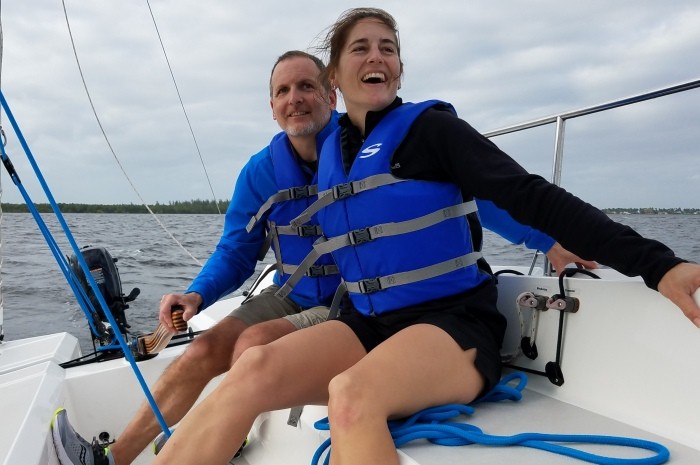
1. Where can you learn to sail?

Offshore Sailing School’s British Virgin Islands base | Scrub Island Resort, Spa & Marina
There are many commercial sailing schools like Offshore Sailing School, and a lot of community sailing schools in the United States, located in marinas and along the shores of popular waterways. There are also sailing clubs in metropolitan areas that offer sailing lessons. Some private yacht clubs also open their doors to non-members who wish to learn basic sailing skills.
2. Where are the most popular destinations to learn how to sail?
One of the best ways to learn how to sail is to do it on vacation , away from work and other distracting daily issues. You might want to find a sailing school that’s on a large body of water like the Gulf of Mexico, the British Virgin Islands, one of the Great Lakes, the Chesapeake Bay, or other places with nice resorts and marinas in comfortable sailing areas.

One of the most popular locations for sailing is the British Virgin Islands , not only because of its beauty. This tropical paradise has lots of open water for easy navigation and protected anchorages to stay in when not sailing. Here the sun always shines, the wind is constant, and the water is warm. This is a great area to advance your sailing skills to the next level – learning how to handle a large cruising boat.
3. When is the best time to learn how to sail?
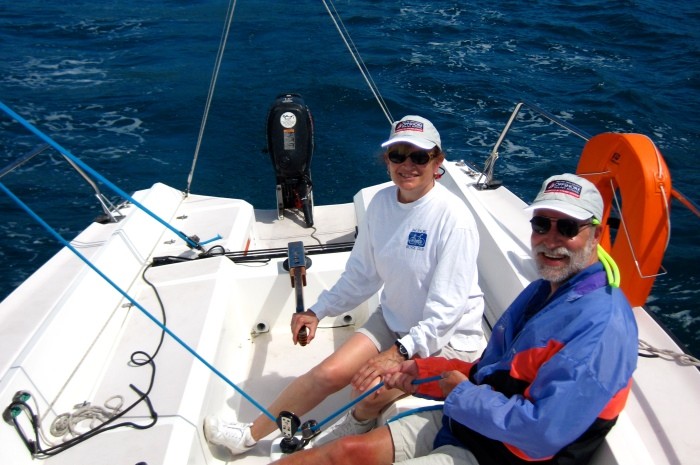
4. What does it cost to learn how to sail?
What is it worth to you? If you want to just try sailing, you can probably take a one- or two-hour lesson for under $100. But to truly “learn” how to handle a sailboat, it’s important to look at options that might fit your goals. Some schools have weekend or shorter courses for around $500, others cost a whole lot more, but it all boils down to “you get what you pay for.” At Offshore Sailing School a 3-day Learn to Sail OSS 101 vacation package includes your course tuition, textbooks, diploma, certification test plus 3-nights resort accommodations, taxes and resort fee for around $2700.
5. Does it matter what type and size boat you learn to sail on?
Yes, it does, big time. If all you want to do is sail off a beach, you can learn on small centerboard dinghies and catamarans. What’s a centerboard dinghy? That’s an open cockpit boat suitable for just one or two people to sit in, usually with only one sail. Though a lot of fun to sail, most centerboard dinghies are prone to capsizing in heavy winds.
When a sailboat’s sail fills with wind, the boat will learn away from the wind, and needs weight under the hull (the part of the boat you sit or stand in), to counteract the force or push of the wind. So you should lower the centerboard when the boat leans (“heels” in sail-speech) to keep the boat from capsizing.
While kids think capsizing is fun, we don’t know many adults who enjoy that aspect of sailing, so we recommend learning on a safe and stable “keelboat” such as a Colgate 26. A keelboat is a sailboat that has a fin-shaped extension (usually lead) affixed to the bottom of the hull. When the sails fill with air and the boat leans (heels) over, the keel is forced to raise in the water in the opposite direction of the sails, and because it has weight in it, the keel wants to stay down in the water and therefore keeps the boat from leaning over too far and eventually filling with water.
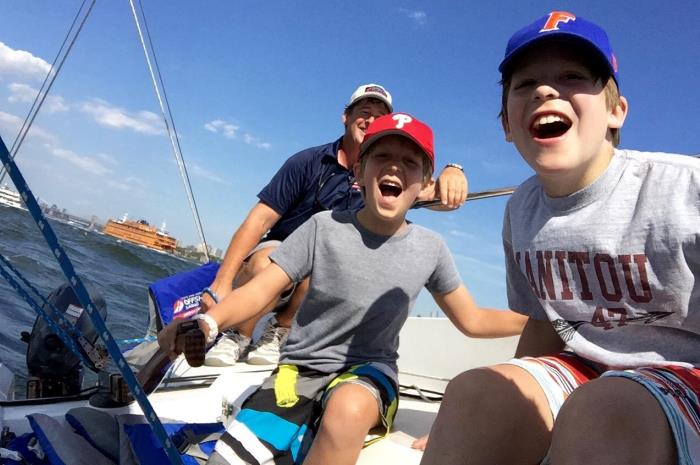
You also want to learn how to make a sailboat go fast, and some sailboats don’t have the characteristics that really get your adrenaline going when you have the sails trimmed for speed. Without getting more technical here, just realize that the fun of learning to sail is truly enhanced when you are learning on a comfortable, fast, very safe sailboat, that has plenty of seating space for you, your crewmates and the instructor.
6. Is it difficult to learn how to sail?
Not really. Over the many years we have been teaching sailing, the one comment we hear from those who are contemplating giving sailing a go, is “it looks hard to do.” Not true. Well, not true after you do a little studying. And that’s what our job is, to make that studying easy.

When you enroll in a sailing course with the intent of gaining sailing certification , able to sail the boat on your own, you should be sent or given a textbook, and should be taught by a US Sailing or ASA certified instructor. It is also helpful if the boat you learn on has all or most of its adjustments labeled with those new words you will be learning. Most importantly, we urge you to check out the sailing school and find out if the course includes classroom time before you head out on the water each day. And we recommend you do some studying in advance, read the whole textbook if you have time.
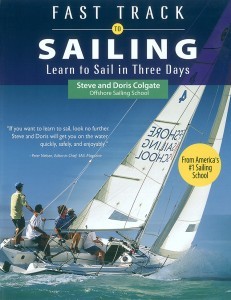
7. How do I choose a sailing school?
Word of mouth is your best source. Ask the people you work with and your friends if they sail or know others who sail. If they do (and we bet you’ll find at least one in that group), they are likely pretty good ambassadors for one or more sailing schools they either went to or heard about. Check out the ads in sailing magazines, like Cruising World, Sail, Sailing, and Latitude 38. Google “sailing lessons” or “sailing schools” and see what comes up in your area. Then go to their websites and see if what they teach, how they teach, and what they teach on is the right mix for you. It’s also important to find out if their instructors are certified and by whom, and what kind of sailing background they had before they started teaching.
8. So why should I learn how to sail if I don’t want to buy a sailboat and don’t know anyone who owns a sailboat?
Ah, that’s the 64 million dollar question and the answer is easy! Learning how to sail is the first step in a set of fun building blocks that will, indeed, change your life. That next step is to learn to handle a sailboat you can sail and live aboard for short periods or longer. And once you do, the vacation opportunities are endless. Really? Yes, because there are many great charter companies that have fleets of cruising yachts for rent (called chartering), in the U.S., Canada, the Caribbean, Greece, Croatia, Thailand, Tahiti, and many other places around the world.
You can rent one of those boats with a hired captain if you want to just try it out before actually taking the learn-to-sail route, but the real joy comes when you can take the helm and be your own captain. This is called “bareboat” chartering, but nothing is “bare” about the sailboat. Everything you need to enjoy living aboard is supplied by the charter company.
9. Is there a benefit to learning how to sail on a smaller boat?
It’s very important to get the basics of sailing on a medium-size, open cockpit boat where you are close to the water and can immediately see and feel the reaction of the boat when you go through maneuvers. Larger boats do not give you that kind of immediate feedback. Even professional maxi boat sailors will tell you to learn how to sail on small boats first. Why? Because cruising boats are much heavier and thus react slower. It’s really easy to over-steer a cruising boat, turn too far and then have to over-correct to get back on the track you want.
So, after you take the first step, and get what the industry calls “Basic Keelboat” certification , then the next step is to go to a sailing school that uses cruising boats that are at least 35’ in length, preferably bigger, and learn not only how to handle the larger, heavier sailboat, but also the various systems aboard. Everything you absorbed in the learn how to sail course will come back automatically on the larger sailboat.
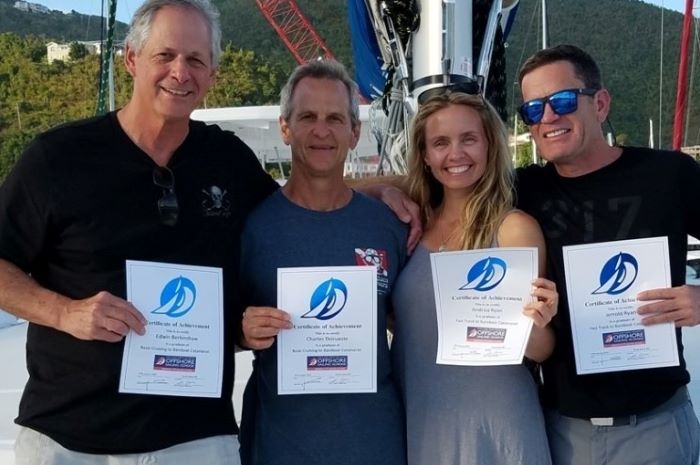
10. How fast can I become qualified to charter a big sailboat on my own?
You can get all the certifications you need in one complete course at Offshore Sailing School. We call that course Fast Track to Cruising® . You start with the Learn to Sail course and earn US Sailing Basic Keelboat Certification the first two days while learning how to sail a Colgate 26. Then you board a 43’ to 50’ cruising sailboat and gain your US Sailing Basic Cruising and Bareboat Cruising certification over the next five days. What an awesome experience that is!
GET IN TOUCH
Call us today.
888-454-7015 or 239-454-1700
Ask our experts about training, group packages, vacations, and more!

6338 Presidential Court, #201 Fort Myers, Florida 33919
SPECIALS COURSES
Site Map Privacy Policy
LOCATIONS CONTACT US
ABOUT US SAILING TIPS
OPPORTUNITIES
© 2024 Offshore Sailing School - Official Site. OffshoreSailing.com is managed by Offshore Sailing School.
- Privacy Policy
- Fast Track to Sailing | Beginner to Advanced in Six Days
- Fast Track to Catamaran Cruising
- Fast Track to Boat Handling & Docking
- Ultimate Cruising Course
- Private Courses
- Catamaran Refresher & 114 Endorsement
- Team Building Programs
- Women’s Sail Sip Spa Week in the British Virgin Islands
- Top 10 Tips Learning How to Sail
- How to Become a Sailing Instructor
- Yacht Lease Management Opportunities
- Bookstore New!
- About Sailing
- Captiva Island
- St. Petersburg
- Fort Myers Beach
- Scrub Island
- St. Lucia & Windward Islands
- Greece Ionian Islands
- Sicily In The Aeolian Islands
- Dubrovnik-Montenegro Flotilla Cruise
- Italy’s Amalfi Coast Flotilla
- Tahiti’s Society Islands
- Team Building
- Testimonials
- News, Specials & Events
- Offshore Sailing School Returns to Captiva Island, Florida
- Sailing – Out & About SWFL
- America’s Cup Endeavor Program Videos
- Growing Up Moorings
- Doris Colgate Sailing Clinic & Cup
- Steve Colgate Inducted Into National Sailing Hall of Fame
- OSS Student Proposes During Course
- Steve Colgate and National Sailing Hall of Fame
- St. Lucia and Windward Islands Flotilla Cruise
- Weathering Unexpected Bad Weather
- A Sailing Adventure He Still Can’t Believe Was Real
- 2016 Croatia Flotilla Cruise Diary
- How We Teach
- Steve & Doris Colgate
- Steve Colgate
- Doris Colgate
- Management Team
- Employment Opportunities
- Our Mission
- Our History
- Alumni Benefits
- Awards & Accolades
- Our Philanthropy
- Certification Levels
- GET STARTED
EMBARK ON A LIFETIME OF ADVENTURES
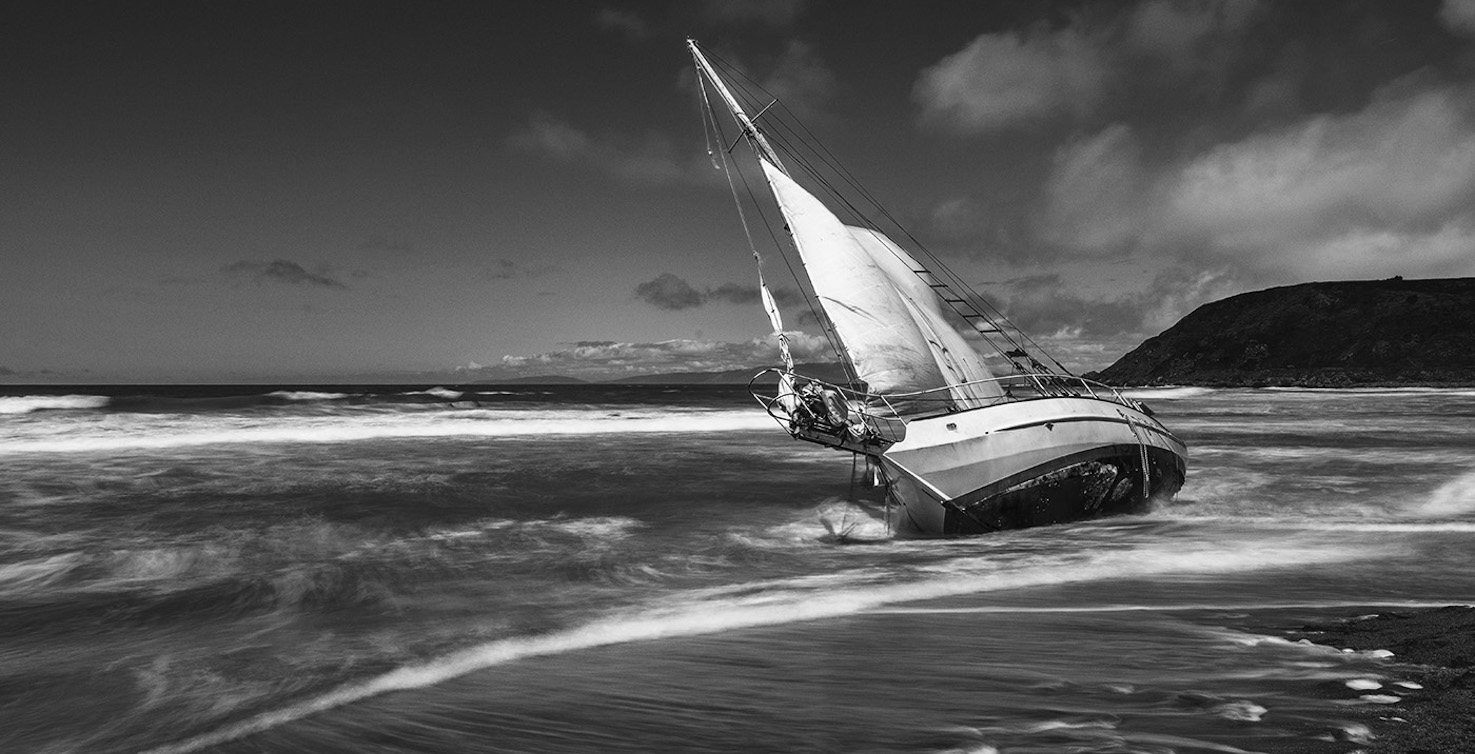
THE STAKES ARE HIGH
Embark successfully.
THE ULTIMATE LIVEABOARD SAILING COURSES
4,000+ alumni sailing the world, outstanding instructors, outstanding reviews, official asa certified facility, official asa sailing school for dream yachts, as featured in.

Connect With Us
Plan Your Trip
START YOUR SAILING JOURNEY NOW
FREE RESOURCE! AVOID COMMON PITFALLS ON YOUR SAILING JOURNEY
We’ve successfully taught more than 4000 students over the years and can help you avoid common mistakes.
Here are 5 Top Tips to help you confidently embark on your sailing journey.
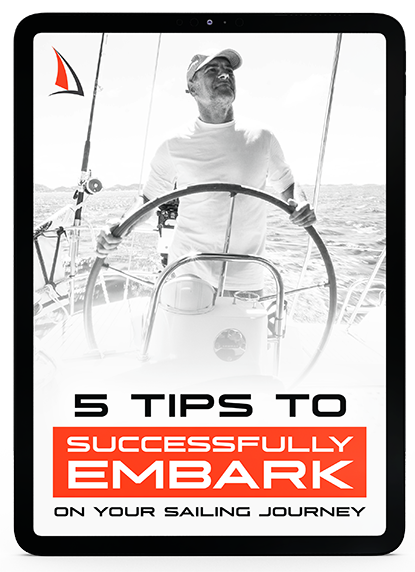
- TERMS OF USE
- Privacy Policy

SailingEurope Blog - Sailing, Yacht Charter and Beyond
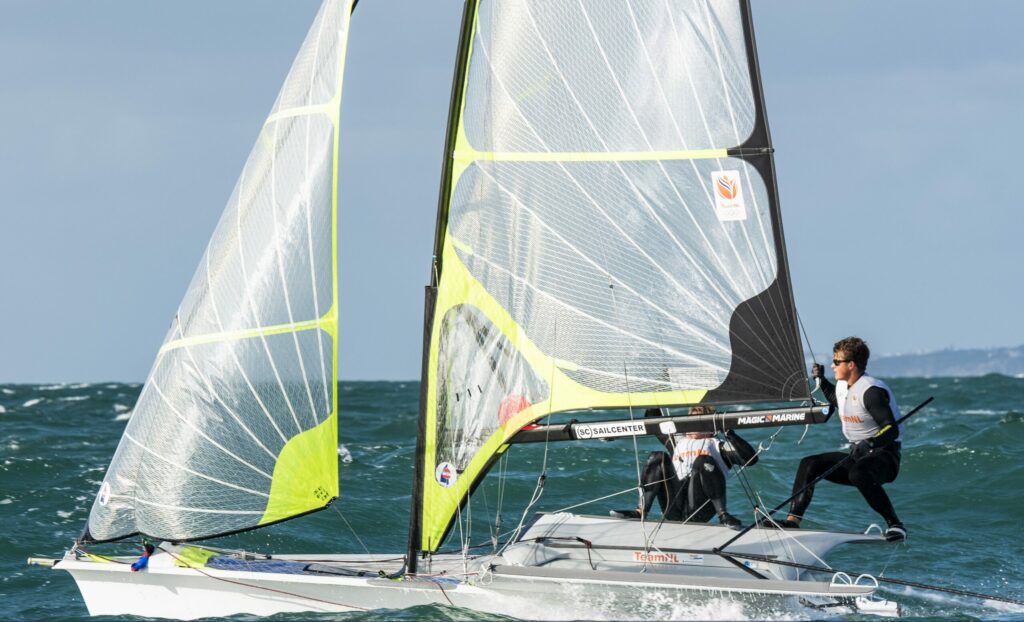
Learning How To Sail – Everything You Need To Know
For hundreds of years, the sea has been catching the attention of people from all over the world. So it is not a surprise that people have started practicing all kinds of water activities, including sailing. However, it is important to stress that breaking into the sailing world can be challenging as there is a lot of information to grasp in order to be successful. The question that arises is how to learn sailing? Whilst learning the basics of sailing will not take too long, learning how to sail like a professional can take years. However, once you catch that sea bug, there is no getting rid of it. To be able to fully enjoy the experience of sailing, it is important to keep in mind that sailing is more than just a sport. Sailing is a lifestyle.
[su_quote]If you’re advanced or just curious about the other sailing topics, here are some awesome articles: ‘ Safest Caribbean Islands And The Ones To Avoid ‘, ‘ Brisihs Overseas Territories And Their Future ‘ or ‘ Top 10 Sailing Movies ‘. In case you’re a beginner, this article is perfect for you.[/su_quote]
If you are thinking of learning how to sail, here is the best way to do it:
- WHAT YOU NEED TO KNOW BEFORE GOING ON BOARD?
- YOU’RE ON BOARD, WHAT’S NEXT?
GETTING FAMILIAR WITH THE SAILS
- HOW TO MANEUVER THE SAILBOAT?
BEFORE GOING ON BOARD
Before even stepping on board a sailboat, you need to get familiar with everything boat-related. First of all, you should consider attending a sailing course. Professional instructors can teach you all the sailing basics that you need to know. It is usually not allowed to begin sailing without taking a course or without showing basic knowledge. There are also lots of books for beginners in sailing. They can help you and inspire you to start your sailing adventure.
While learning how to sail, you need to get familiar with the most important parts of a sailboat , as well as basic sailing terms . There are eight essential parts of a sailboat:
- Hull – the lower part of a boat that provides balance and reduces drag
- Keel – a slim plank that sticks out of the bottom of the hull and prevents the boat from tripping over
- Rudder – the part of a boat that is connected to the tiller and helps in steering
- Tiller – the part of a boat that is used for steering (steering wheel), it is attached to the rudder
- Mast – a long pole that is located in the center of a boat, it carries the sails
- Mainsail – the larger sail that serves as an engine, i.e. propels the sailboat
- Jib – the smaller sail that gives additional power to the mainsail
- Boom – a long pole that extends from the mast and is parallel to the deck
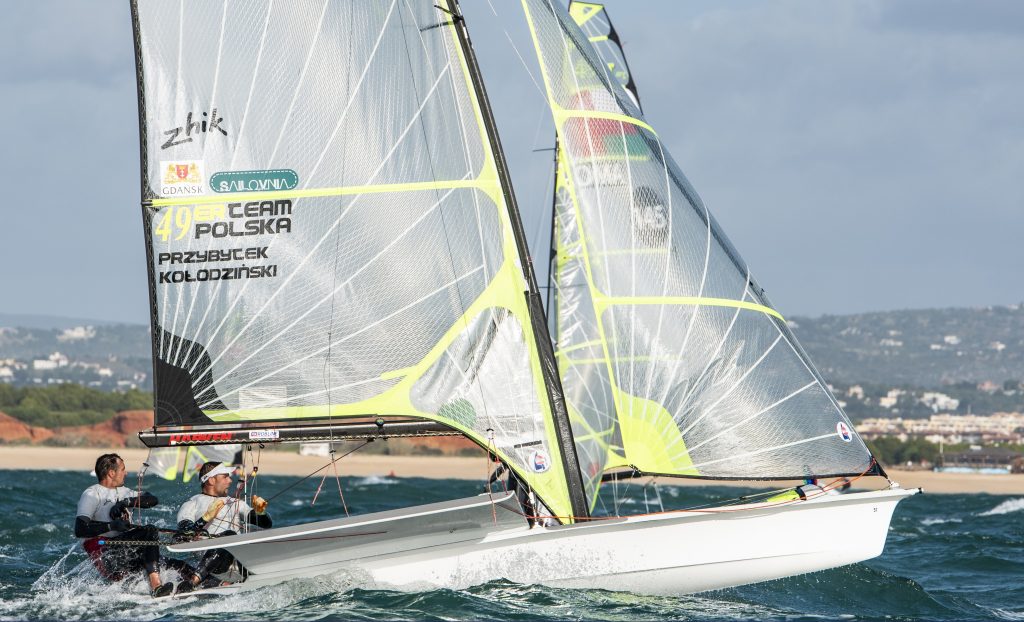
Another term that could be added to the list is the sheet , i.e. rope that is used to adjust the sails. Next, it is important to dress properly . When it comes to clothing, be a minimalist. The weather on the sea can be quite unpredictable and you need to take into account that you are surrounded by water which can very quickly become your worst enemy. Due to the possibility of a strong wind, it is best to dress in layers and always wear a lifejacket. Invest in clothes that is waterproof as well as non-slip shoes. Furthermore, always wear a swimsuit underneath, avoid wearing excessive jewelry and don’t forget to apply sunscreen. You will also need gloves for handling the rope. Other than that, it is important to pack the essentials, such as food, water and some extra clothes.
WHEN ON BOARD
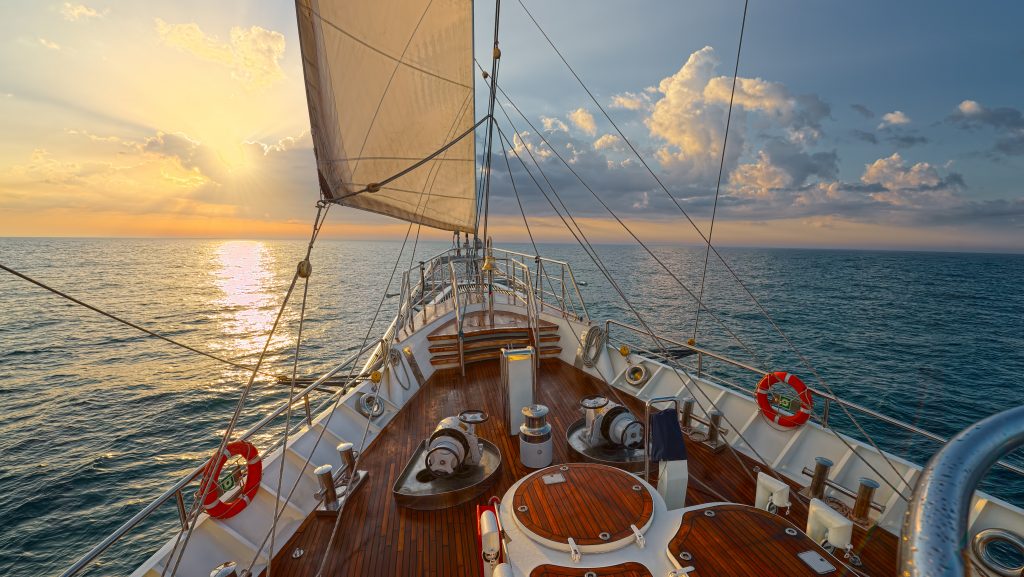
After you’ve learned all things boat-related, it’s time to step on board of your sailboat and start your sailing adventure.
When learning how to sail, choose calm, uncrowded waters . Remember that it is good to practice in the perfect conditions before sailing in waters full of traffic.
Don’t go for the largest boat you can find – start with a small boat . Then work your way up to the larger ones. Also, start with a boat only rigged with one sail as this will make learning the basics much easier.
It is vital that you follow all safety procedures . There are certain safety precautions that should be taken when sailing, no matter how experienced you are. Therefore, you should always inform someone you are going out into the water. Also ensure that you have a flotation device with you – just in case. And, of course, you need to know how to swim.
Before you go out into any water – to practice or to sail – you should always do your research on the weather conditions . This way you can prepare accordingly – the first thing you should know about sailing is to always be ready.
One of the scariest things that you need to do is to capsize on purpose . The possibilities of capsizing are extremely high when sailing and you should be prepared for the worst. Also, it is better for you to practice capsizing in a controlled and safe environment. That way you can be ready to do the right thing when it happens unexpectedly.
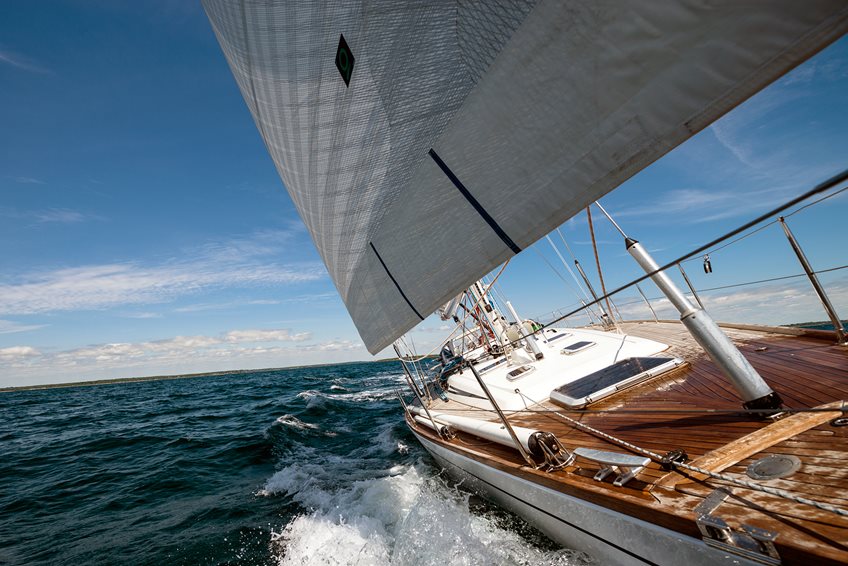
There are a few technical steps that you need to master in order to learn sailing.
First of all, you should know how to adjust the sail settings in order to take full advantage of different weather conditions. The name for adjusting the sails using the sheets is trimming . Trimming is done to create the best shape for the direction you are sailing in. The most important, basic rule when it comes to your sails is that the closer you sail towards the direction of the wind, the tighter you will have to pull your sails. Also, the further you sail from the direction of the wind, the less you pull on the sails.
When you decide to learn how to sail, one of the most important lessons to master is that of how to steer the boat. After all, you won’t get far if you can’t steer! Two main parts of a boat that do the work in steering are the tiller and the rudder . You can think of a tiller as a steering wheel of the boat, while the rudder would be its tire. As the boat starts to move, you need to ensure that you sit on the side that the wind is blowing over.
This is important as the wind will sit against the sails and your weight will be needed on the other side to get the boat to move in the right direction. Steering can be difficult as it tends to go the opposite way from you. If you wish to go right, you will need to steer the tiller to the left. In the same way, if you desire to move starboard, you will have to move the tiller to port. This will make sense once you learn the mechanics of the boat and how the rudder is hinged – which you will learn during your sailing lessons.
Another important thing to know when learning to sail is to understand which way the wind is coming from in relation to where the boat is. Ensuring that your boat is positioned in the correct place in relation to where the wind is blowing is crucial to how you set off and position the weight of the boat. One of the best ways to see where the wind is coming from is to tie small pieces of yarn to the boat’s shrouds in order to see which way they are blowing.
LEARN HOW TO MANEUVER THE SAILBOAT
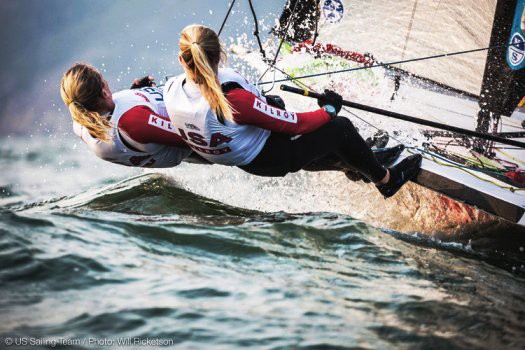
After you’ve established the direction of the wind and you’ve gotten familiar with steering, you need to learn how to maneuver the boat.
First of all, it is important to know that a sailboat can’t move in the direction from which the wind is blowing. To be able to become a master of the wind and reach the desired destination, you need to learn two most important sailing terms – tacking and gybing – and then you need to learn how to perform them. To change the tack of a sailboat means to change its course according to the direction of the wind – you begin sailing into the wind, but since that’s impossible, you need to tack back and forth, i.e. constantly cross the wind to be able to move.
When tacking, you will perform a series of zigzagging , i.e. turning the bow of the sailboat through the wind. You will need to move from one side of the boat to another because you will change the position of the sails. The boom of the mainsail will go from one side of the hull to another making a 60 degree turn. On the other side, when you’re sailing down the wind, you can perform gybing , i.e. you can change the course by turning the back of the boat through the wind.
With this action, your sailboat will move in a circle. When a sailboat jibes, the mainsail and its boom suddenly change their position from one side of the boat to another (a 180 degree turn). It is important to stress out that gybing can happen unexpectedly and that you can get injured if you get hit by the boom. So be careful! You will do lots of tacking and gybing when sailing on board of a sailboat, so arm yourself with patience because it won’t be easy!
In the end, the best way to learn to sail properly is by perfecting these four main skills :
- To be able to recognize when the sail is trimmed properly
- How to tell which way the wind is blowing
- How to maneuver the boat
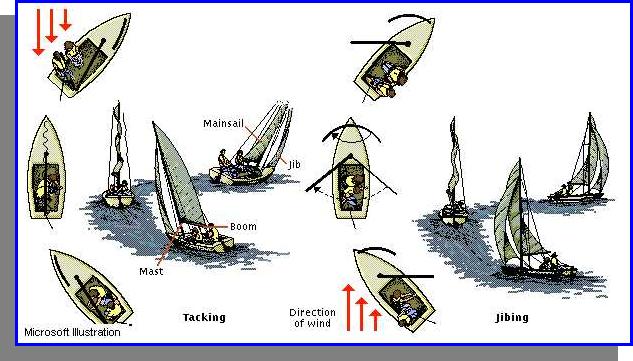
Once you have learned and understood these four main skills, you are well on your way to becoming a professional sailor – the world really is your oyster. Until then, be patient, persistent and remember that practice makes perfect!
In case you prefer video over text, here is an amazing video that will get you started. In video you can see where all said part actually are located on the boat. You can learn how to spread both sails and learn some basic sailing terms. In conclusion, everything you need to know to get you out to the sea is covered in this short video. See you at the sea, sailors.
1 thought on “Learning How To Sail – Everything You Need To Know”
That’s really nice. I appreciate your skills. Thanks for sharing.
Leave a Comment Cancel Reply
Your email address will not be published. Required fields are marked *
Save my name, email, and website in this browser for the next time I comment.
This site uses Akismet to reduce spam. Learn how your comment data is processed .

Home Education Youth Learn to Sail
Learn to Sail
Getting started is easy, by learning to sail with a us sailing-certified instructor, you’ll learn the sailing skills that you need to be a safe, confident, successful sailor. over 1500 smallboat instructors and coaches are certified by us sailing each year and are ready to teach you to sail at your local sailing school, yacht club, or community sailing center., smallboat sailing.
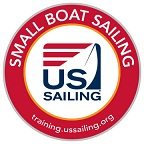
Many instructional programs teach on and rent small boats, including a majority of community sailing programs, most yacht club junior programs, and an assortment of aquatic centers, camps, parks & recreation departments, Y’s, Scout programs, university and military recreation facilities. By learning to sail a small boat with a US Sailing-certified instructor, you’ll learn the skills you need to build your confidence and ability to sail the boat well and safely.
The Learn Sailing Right! instructional books are the industry standard for small boat education, with step by step guidance for beginner and intermediate sailors. You may become a certified Smallboat Sailor by completing the requirements in the Little Red Book , US Sailing's Small Boat Sailor Certification Record Book, supplied and validated by your US Sailing instructor. Be sure to check out all of the US Sailing Education materials available for purchase in the US Sailing Store .
Find a Sailing Program Near You
The right sailing program for you might be just down the street! Browse our Where to Sail map for listings of sailing schools, yacht clubs, and community sailing centers near you.
Find a Sailing Program:
Where to Sail map
Windsurfing
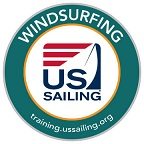
US Windsurfing partners with US Sailing to support recreational and competitive windsurfers across the country. For more information, visit: US windsurfing
Education, Youth
Risk strategies - gowrie group.
- Junior Sailing Safety Guide
- Responsibility to Your Students as a US Sailing Certified Instructor
- Advantages of US Powerboating’s Safe Powerboat Handling Courses
- Emergency Action Plans and Safety Resources
- Case Study: An Emergency Action Plan Report from OCSC
- The Importance of Accountable Sports Parents
- SafeSport Free Online Parent Training
- SafeSport Parent Tool Kits
- Winning the Race to the Right Finish Line in Youth Sports
- Can Youth Sports be Both Fun and Competitive?
- Developing Youth Sailors: What parents can do to build a strong foundation
- Hosting a US Sailing Championship
- Event Recap: Americans Finish On the Podium at RS Feva Worlds
- Youth Sailing: Get Out of Your Comfort Zone This Summer!
- Sailorships Financial Aid For Junior Sailors
- Ten Guidelines for Running the Junior Big Boat Program
- An Introduction to the Junior Big Boat Sailing Program
- Small Boat Sailing: Teaching Sportsmanship
- What Makes Classes Strong?
- Knowing Your Destination: Setting the Right Goals
- Top 10 Reasons to Sail a Catamaran
- Reviving Your Regional Youth Racing
- Introducing Adventure Sailing to Your Program

Whitney Kent Youth Programs Associate Email Whitney Kent
Zeth Morgan Education Coordinator Email Zeth Morgan

Bonnie Braddock Learning Design and Development Specialist Email Bonnie Braddock
Phil Muller Youth Performance Manager Email Phil Muller

Andrew Clouston SVP Programs & Services Email Andrew Clouston

Bradley Schoch Senior Instructional Designer Email Bradley Schoch

Peri Burns Educational Operations Manager Email Peri Burns 401-342-7963

Andi Barton Sr. Education Coordinator Email Andi Barton 401-342-7910

John Pearce Youth Racing Manager Email John Pearce 401-342-7930
Copyright ©2018-2024 United States Sailing Association. All rights reserved. US Sailing is a 501(c)3 organization. Website designed & developed by Design Principles, Inc. -->
- Sail cruising courses
Our practical and theory courses will take you from complete beginner to capable skipper and beyond
Stepping into the world of sailing for the first time is exciting and exhilarating. The courses in the RYA Yachtmaster training scheme will help you learn to sail and build confidence, become a useful crew member and even learn how to skipper a sailing yacht and manage it’s crew.
Most courses can be taken either on your own or with friends and family, including children provided they meet our minimum age recommendations. There are also flexible options allowing you to do the course in one go or split over several days or weekends.
Our sail cruising courses can also help you progress to the RYA/MCA Yachtmaster Certificates of Competence which are recognised by maritime authorities worldwide and can be commercially endorsed for professional skippers and crew.
So whether you’re new to boat ownership, want to charter a yacht on holiday, or to venture further offshore – there’s an RYA course for every level.
Our practical on-the-water courses build confidence, teaching you everything from basic terminology and safety tips to how to skipper a yacht and manage its crew. You can enter at any level, provided you have the correct level of experience.
Cruising Level 1 - An entry level course focusing on the principles of sailing a yacht. Can be run in conjunction with the Basic Skills course.
A short introduction to sailing for complete beginners.
Cruising Level 2 - Build on the skills gained during Start Sailing, Competent Crew or Day Skipper, focusing on sailing techniques as both crew and helm.
A hands-on course for anyone interested in becoming a useful crew member.
A course for aspiring skippers with some yachting experience and basic navigation and sailing skills.
Advanced skippering techniques for those with considerable knowledge of sailing and navigation, wanting to undertake coastal passages by day and night.
Our navigation and other specialist short courses complement the sail cruising practical courses and will take your knowledge and confidence to the next level.
A basic introduction to navigation for new skippers, crew or anyone interested in getting out on the water.
A more comprehensive course recommended for inexperienced skippers and anyone thinking of doing the Day Skipper practical course.
Take your theory knowledge to the standard required for the RYA Yachtmaster Coastal and Offshore practical exams.
Unravel the mysteries of astro navigation, using a sextant, ocean passage planning, worldwide meteorology and electronic navigation aids.
Get qualified to use a handheld or fixed marine VHF radio with our course and exam.
From first aid to diesel engine, there are a number of related classroom and online courses you may find useful as you develop your knowledge.
- Certificates of Competence
- RYA Yachtmaster
An RYA Yachtmaster Certificate of Competence is the ultimate aim of aspiring skippers. It is a well known, highly respected qualification worldwide, proving your experience and competence.
You are capable of coastal passages
You are competent to undertake passages up to 150 miles offshore
You have the knowledge and experience to sail worldwide
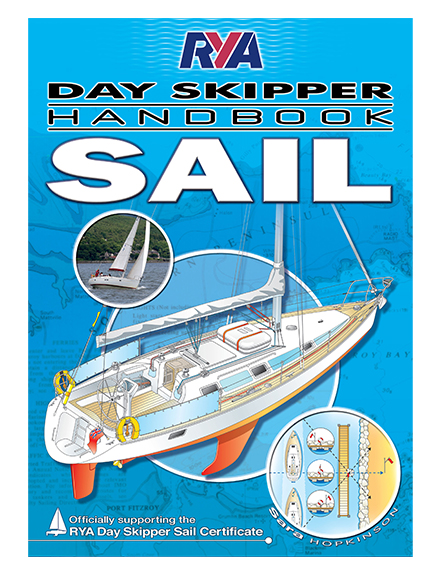
With more than 100 different titles to choose from, there’s an RYA book, eBook or audiobook for every age, interest and ability. Visit our webshop for course books and a range of supporting titles.
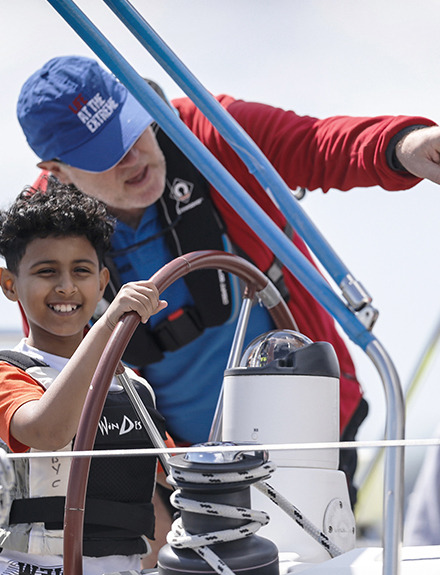
Sailing is great fun for all ages and there are plenty of opportunities for young people to get involved. Check our course descriptions for minimum age recommendations.
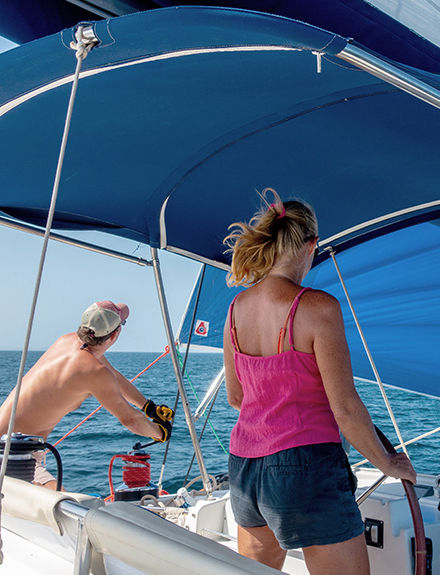
If you want to cruise outside of the UK you are likely to need an ICC. RYA course completion certificates can be used as evidence of your competence.
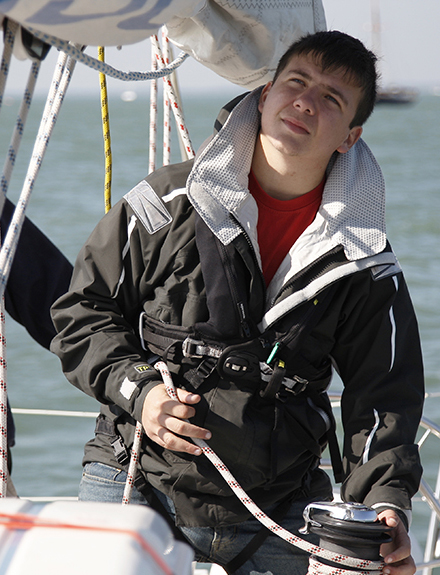
Find out more about commercial endorsements, professional qualifications and what it takes to work on the water.
- Getting into Sailing
DIVEIN’s guide to:
Learning to sail – advice from our editor.

Our writers have different levels of experience on various types of vessels. This is a general guide to learning how to sail based on the shared belief that getting out there and relying on your sound judgment is the best way to learn to sail.
This guide is full of suggestions on how to do that, including where to learn and what courses to take.

So a friend took you out for a sail, and you caught the sailing bug? How do you learn more? Lessons? Rentals? Do you go get a boat of your own? And when can you get out there again?
Some people have seawater in their blood from an early age. Parents who sail bring their kids into the sport. The kids are immediately comfortable and gain a love of water and sailing. But many don’t come from boating families and don’t get on a sailboat until later in life.

There are many ways to get on the water without waiting for your boat-owning friends to invite. And when you know you’re ready, you can get your own boat and sail as much as you want, where and when you want.
The First Step to Learning to Sail is Understanding the Wind:
Types of Sailing
How you sail and what you like affects everything, from how you learn to sail to the type of boat you buy. You don’t have to pick one type of sailing. Just because you love the thrill of racing doesn’t mean you can’t take your boat out and spend a weekend on an island offshore.
But when you’re learning, it’s good to know what you can expect. Racing dinghies or keelboats is a very different experience from cruising from quiet anchorage to quiet anchorage.
It’s said that any time there are two boats in sight of each other, a race is on. Seeing a boat gaining on you is an inspiration to check your trim and tighten up your boat, but there is a formal sport of sailboat racing, which is quite popular.
At its most common level – the club race – boats go out on a weeknight or weekend and chase each other around a set of marks. Like you see in golf, there’s a handicapping system to adjust finish times for different boats, so faster and slower boats can compete against each other.
There are also fleets of identical “one-design” boats, and many weekends and multi-day regattas with a much higher level of competition. Sailors race everything from the smallest dinghies designed for children on short courses up to massive multi-million dollar custom yachts crewed by professionals in offshore distance races across oceans.
Most beginning sailors don’t jump straight to racing, but club racing fleets welcome even the newest sailors since there’s always a boat with space and everyone wants to bring new sailors to the sport.
“Cruising” a sailboat is just a fancy word for taking your boat someplace away from your slip or mooring for a longer duration. Similar to racing, you can cruise a lot of different ways, but the most common cruiser is the weekend and vacation sailor.
Every weekend, dedicated sailors get on their boats and sail away from their home port to somewhere different. It can be the next harbor down the bay, an island not too far offshore, a multi-week vacation adventure, or a full season far from home.
On the other end of the cruising spectrum are full-time liveaboards and blue water cruisers. These sailors live on their boats and sail from country to country, spending years abroad and following global weather patterns, like the trade winds, for crossing oceans.
You don’t need a big boat to cruise, you just need a desire to head somewhere different. Larger boats have living facilities to meet your basic needs, and the larger the boat, the more plush and comfortable your time onboard will be.
Day Sailing
Getting out on the water with no particular place to go is a popular pastime, especially with small boat owners, though you can and should day sail anything. A dinghy or small boat designed for day sails doesn’t have accommodation down below, but they’re easy to set up and put away.
Popping out after work or for a few hours on a weekend is very manageable. Most don’t have keels and are easy to get in and out of the water, and can store on trailers or dollies instead of more expensive mooring or slips.
Day sailors are great starter and learning boats before you take the plunge on something bigger.
Types of Boats
If you’re thinking about buying a boat, consider what you want to do with the boat. But even if you make a determination like “I want to cruise, and I will never race”, there are still thousands of boats and styles to choose from. Whether you’re on the water or walking the docks, you’ll have questions!
Dinghies and Day Sailing
There’s no hard and fast rule about what a sailing “ dinghy ” is, but most boats considered a dinghy are small, have no living space or space below decks, and don’t have a fixed ballast (weight on the bottom for stability). These are great boats for day sailing, and racing dinghies is popular. There are big fleets, and the boats aren’t expensive or difficult to rig and sail with one or two people.
Popular racing dinghies include the Laser, the 420, 470 and 505, and a RS Aero. Some favorite day sailers include the slightly bigger Flying Scot and the Wayfarer . The Sunfish is another, more sporty dinghy worth looking at for its ease of use and maintenance.
If there are enough daysailers of the same type in an area, a racing fleet will inevitably develop.
Monohulls & Keel Boats
The monohull is the boat most think of if you ask them to draw a sailboat. There is a single hull and an underwater stabilizer – whether a centerboard, daggerboard, or keel.
A keel may be thousands of pounds of lead or other dense material, but it gives the stiffness and resistance to tipping when heeling over and the push back against the wind that the boat needs to sail.
Some advantages of single hulled boats are lower build cost, the ability to right when tipped over, loading and weight affects them less, and they sail closer to the wind. But they do heel (tip), and some find that uncomfortable or frightening, they are heavier, and are often not as fast as multihulls.
There are hundreds of brands of monohulls to choose from new and used. They will be anywhere from 18 feet to more than 50, but some of the more common coastal cruising production boats you’ll see are made by Beneteau, Jeanneau, Hanse, Hunter, Bavaria and Catalina.
On the higher end, Hallberg-Rassy, Hinckley, Swan, and Oyster are a few of the premium offshore brands. Popular racing boats include Farr, Melges, J/Boats, X-Yachts.
Almost all these designers and builders make boats that overlap functions, so you will have race boats with livable interiors and cruising boats with enough zip under sail to be fun and competitive to race. The Beneteau First series is a good example of a cruiser/racer, as well as many offerings from J-Boats and X-Yachts.
Multi-hulls: Catamarans and Trimarans
Over the last two decades, catamarans have grown in popularity among boat owners because they afford a level of space and comfort beyond that of traditional sailboats, and sailing them is more comfortable. First and foremost, catamarans are wider and therefore provide roomier decks and indoor eating spaces.
It’s tough for a monohull to compare with the living space in a bridge deck saloon or the aft cockpit areas of larger catamarans, and the hulls give ample space for cabins and sleeping.
Sailing upwind, a catamaran stays flat and doesn’t tip, giving an easier ride.
Many small, day-sailing versions of cats and tris are easy to sail, a lot of fun, and you’ll see them at many resorts throughout the world. Some of those will tip if you aren’t careful! But they’re also sporty and easy to rise up again.
Catamarans have two identical hulls, but a Trimaran has a single central hull and two smaller outside hulls or “amas.” The amas aren’t living spaces, but can act as storage for items like kayaks.
Because the trimaran needs a narrow center hull, they have no more space than monohulls. But they are light, incredibly fast, and draw next to no water so you can anchor them almost up on a beach.
But catamarans aren’t without disadvantages. With two hulls and a bridge deck connecting them, catamarans are more expensive to build and buy. Because they’re wider too, a slip in a marina is both more expensive and harder to find as a guest.
Overloading also hurts multi-hull performance, so capacity for gear and supplies is limited. Any rough sea state that pounds the bridge deck can be quite uncomfortable.
And while big catamarans are very difficult to capsize, if they flip, they will not come upright again like a monohull.
Ways to Learn More
It takes skill to sail. You can learn the basics of getting a boat to sail in an afternoon, but to get mastery to navigate, sail quickly, and deal with some situations you can get into on the water like heavy marine traffic or bad weather, that takes time.
Learning what all the buoys mean should be done and familiarizing yourself with nautical flags is also smart.
There’s no substitute for time on the water for skill-building, but there are some ways to shorten the learning curve and help you make the most of your time on the water.
Youtube is, actually, a repository of quite a few useful videos, like the one below.
When it comes time for you to think about buying your own boat, the more skill you have, the better decisions you’ll make.
Sailing Lessons
Every waterfront town with sailing has sailing lessons somewhere. Whether it’s a sailing school, a charter captain who will teach you for a few hours, or a community sailing center, there is always a way to get an instructor to give you the fundamentals, though it’s rarely free.
Look for a school or center affiliated with a governing body like U.S. Sailing , Royal Yachting Association ( RYA ), or a training organization like the American Sailing Association ( ASA ), since those will have recognized standards and curricula.
Some sailing bodies and sail training organizations offer online training towards certifications. These can be solid tools to get you the theory you need, especially in the winter. But you will still need to get on the water to put it into practice. The ASA, U.S. Sailing, and the RYA offer courses which combine online training and on-the-water lessons.
Studying Up
Besides online coursework and surfing the web for videos and how-to articles, books and magazines can help you get more information and knowledge. Consider subscribing to some magazines well before you buy a boat; they’ll help you get an idea of the market for boats and gear and many practical tips.
Crewing for Others
Other people’s boats are great places to learn. Most club races have boats with spots for new sailors, and almost every sailor you meet is going to encourage you and want to help you learn. Even if you never want to race your own boat, a summer spent sailing in a low-key racing series at a club near you will do wonders for your sailing skills.
Facebook is actually a decent way of finding sailing clubs and networking with people who could use company for a day sailing. That’s free experience, potential friendships and a way out onto the water.
Wangling an invitation to spend a weekend with someone is a little trickier if you’re not already friends with a boat owner. But let people know your availability, since some skippers may want an extra pair of hands for their boat.
Getting on the Water Before You Buy
Turning an interest in sailing into a lifelong passion takes getting out on the water, something that isn’t so easy before you’re willing to commit to owning your own boat. But there are a few ways you can easily get some tiller time. They’re not free, but they are reasonable and free of the responsibilities of ownership.
Community Sailing Centers
All along the coast, you’ll find community sailing centers you can join. Their mission is to promote sailing and make sailing more available to everyone. Most offer lessons, and most have a fleet of small boats for member use once you’ve taken some lessons or passed a skills test.
Typical costs may run around $200 per person, though family memberships are usually cheaper, and many offer youth sailing.
Boat share clubs
More expensive than a community sailing center, boat share clubs give you a broader range of larger and more complex boats than the dinghies and daysailers you’ll find in a community boating center. You pay annual or monthly fees, reserve boats, and can choose from a variety of sail and powerboats.
Once part of the club, you’ll get access to the fleet of sailboats and motorboats too. That includes bowriders , pontoon boats , and even cabin cruisers . For fishing, some clubs also have the very cool jon boats too.
So learning to sail through clubs also gives you access to try myriad other vessels. And since they want to protect the club fleet, most clubs offer training at a rebated membership price.
Check out some peer-to-peer boat sharing opportunities as well. Google “boat sharing near me” and you’ll find some results. Or look up: rentaboat.com , boatsetter.com , samboat.com to find some sharing chances.
If you live near a boat rental concession, you always have a commitment-free way to get on the water. There won’t be any dues or membership, but you will pay hourly or for blocks of time as you use them.
Yacht Clubs
Join a yacht club without owning a yacht? It’s more common than you think, and many yacht clubs have cheaper “social” memberships for those who don’t own boats. What the club offers you is access to sailors and boat owners, social events, and maybe even sailing lessons or boats to use or rent.
It’s a great way to meet people who want help in the weeknight races, or an extra set of hands to help handle the boat on a weekend away.
How About a Charter?
Chartering a boat is, hands-down, one of the best ways to learn if skippering a boat and cruising is for you. Even if you don’t have the skills to charter a boat yourself, chartering with a captain will still teach you loads and give you a good feel for life aboard. Many charter captains will teach you during your charter, and all captains will get you as involved with the sailing as you want to be.
You can also check out different styles of boats to see which suits you better. A week on a monohull and a week on a catamaran will give you a very clear picture of the differences between them and why you may prefer one over the other. Most charters are late-model yachts in good condition, and very close to what you can buy on the new boat market.
Is it time to buy a boat?
When you have your own boat, you control your own destiny and can catch that feeling at any time. But are you ready to make the commitment? Boat ownership can be expensive and time-consuming, and buying the wrong type of boat for your skill level or buying a bad boat can spoil your love for what could be a lifetime passion.
- Learn how to choose a Jon Boat
Check your skills
The best way to get a good deal on a near-new boat is to find a skipper who bought a boat too big for his skill and is miserable because he can’t handle it without help or at all.
You do not want to be that skipper.
Before you take the plunge into a boat, you need to make sure you’re up for it. Take a realistic evaluation of your own skills, and consider that a small, simple boat may be a better place to start.
Sure, that flashy fifty-footer at the boat show may tick all your boxes and set your heart aflutter, but it is much more powerful and mechanically complex than a thirty-five-footer. If things go badly, the forces are bigger. As are the repair bills.
While there is nothing limiting your boat choice but your bank balance, give some long thought to what you’re getting into. There is nothing wrong with a “starter boat” as your first boat, where the loads are small, the systems are simple, and you’re not committing as much money before you go all-in on your dream boat. A couple of seasons in a 30-40 footer and you’ll be ready to move up safely.
Look at your budget
Many boat services are charged by the foot, so the bigger boat you get, the bigger those expenses. And those aren’t related to the price or age of your boat – a twenty-five-year-old boat costs the same to keep in a slip or haul out as a brand new boat worth ten times as much.
Buying the boat is the first step. You’ll need to berth it for the summer, store it for the winter, maintain and clean it, insure it, deal with repairs, buy sails, get a tender if you cruise, and handle other unforeseen expenses. Most suggest blocking out at least 10% and up to 20% of the purchase price annually for expenses. Of course, that depends on the age and condition of your boat and how much you paid for it.
Before you look at boats in person, look into ownership costs in your area. Check out marinas and moorings to see what’s available year-round for the size and type of boat you’re considering. Look into all the costs, including hauling and dry storage .
Money shouldn’t dissuade you from owning a boat, but it’s important to be realistic and be prepared. You don’t want to get in over your head without knowing you need to budget for more than the price of the boat.
Boats are a time commitment. Not just for boat work or cleaning and maintenance. Every marina is full of boats that never seem to move. Their owners wanted a boat and thought it was a good idea, but the practical realities of their life meant that they didn’t get to use it as they dreamed.
To get value out of your boat, you need to make time to use it. Boats are great for families, but kids with heavy summer schedules may end up keeping you home on weekends. Throughout the summer, you’ll find things to take you away from the water, and if you aren’t careful, the only time you’ll end up seeing your boat is to wash it in the slip.
If you can make sailing a priority for your recreational time, it will reward you richly.
You might also like these boating guides:
- Boat Loan Calculator
- Boating Right of Way Rules
- Nautical Flags and What They Mean
- Types of Small Boats
FAQ – Frequently asked questions about Learning to Sail
Depending on how well you know the vessel, usually a sailboat that’s more than 35 feet long, an experienced sailor can successfully sail alone across the Atlantic as long as they have planned appropriately.
There are specific seasons for sailing either one way or another. Following the Gulf Stream from the Caribbean to Europe one way, or from the Canary Islands to North America the other way are usually done during a specific window of foreseeable winds.
With the right approach to sailing–and respect for winds and waves–sailing is quite safe. But there are some hazards associated with a sailboat, as there are with motorboats.
Read this introduction to sailing to figure out how you can learn to sail.
Related Reviews

Read full review

On this page
Table of content:, breadcrumbs.
- / Getting into Sailing
Continue reading

Cobalt R33 Surf

Lewmar Claw Anchor

HydroForce Caspian Pro 9’3″

Dual AM400W
- Waterproof Backpacks
- Duffel Bags
- Hiking Backpacks
- Waterproof Gear
- Teepee Tents
- Camping Chairs
- Heated Socks
- Marine Binoculars
- Night Vision Goggles
- Windbreaker Jackets
- Collapsible and Folding Wagons
- Portable Power Stations

- Dive Computer
- Scuba Diving BCD
- Scuba Regulators
- Freediving Fins
- Diving Wetsuits
- Women’s Wetsuits
- Scuba Diving Drysuits
- Rebreathers
- Scuba Diving Masks
- Snorkel Masks
- Full Face Diving Mask
- Full Face Snorkel Masks
- Prescription Dive Masks
- Prescription Snorkel Masks
- Snorkeling Gear
- Kids Wetsuits
- Seiko Dive Watches
- Best Underwater Cameras
- Waterproof Cameras
- Underwater Scooters
- Best Dive Knife
- Dive Lights
- Underwater Metal Detector
- Reef Safe Sunscreen
- Scuba Tanks
- Dive Destinations
- Liveaboards

- Paddle boards (SUP)
- Best Touring Paddle Boards
- Best Beginner Paddle Boards
- Motorized paddle boards
- Electric SUP Pumps
- Paddles For Paddle Boarding

- Beach Chairs
- Beach Umbrellas
- Beach Wagons
- Beach Tents
- Beach Canopy
- Beach Towels
- Beach Blankets
- Water Shoes
- Water Socks
- Boogie Boards

- Swimming Goggles
- Swimming Fins
- Swimming Earplugs
- Women’s Swim Shorts
- Life Jackets
- Marine Flares
- Waterproof Marine Radios
- Pontoon Boat Accessories
- Sailing Gloves
- Boat Fenders

- Inflatable Kayak
- Folding Kayaks
- Tandem Kayaks
- Sit On Top Kayaks
- Sea Touring Kayaks
- Ocean Kayak
- Pedal Kayaks
- Fishing Kayaks
- Kayak Life Vests
- Kayak Shoes
- Kayak Paddles
- Kayak Trailers
- Kayak Anchors
- How to Choose a Kayak – A Beginner’s Guide
- How To Choose a Kayak Paddle? [What You Need to Know]
- Kayaking Gear for Beginners
- What to Wear Kayaking
- Kayak Safety

- All Mountain Snowboards
- Snowboard Boots
- Snowboard Bindings
- Snowboard Helmets
- Snowboard Jackets
- Atomic Skis
- Blizzard Skis
- Ski Resorts in the US

- Travel Backpacks
- Weekender Bags
- Packing Cubes
- Suitcases and Travel Luggages
- The Best All-inclusive Resorts in the World

- Men’s Yoga Pants
- Yoga Shorts
- Yoga Mat Bags
- Yoga Blocks
- Laptop Backpack
- Mini Backpacks
- Mesh Backpacks
- Clear Backpacks
- Fanny Packs
- Water Bottles

- Waterproof Jacket
- Waterproof Pants
- Waterproof Watches
- Waterproof Headphones
- Snorkel Fins
- Best Snorkels
- Best Dive Sites in the World
- Best Dive Resorts in the World
- Central & South America
- North America
- Southeast Asia
- Indian Ocean
- Asia Pacific
- Middle East & Red Sea
- All Liveaboards
- Liveaboards in Australia
- Liveaboards in Fiji
- Liveaboards in Micronesia
- Liveaboards in Myanmar (Burma)
- Liveaboards in the Maldives
- Liveaboards in the Philippines
- Liveaboards in Egypt
- Liveaboards in Costa Rica
- Liveaboards in Belize
- Liveaboards in Mexico
- Liveaboards in the Galapagos Islands
- Aggressor Liveaboards
- Liveaboard in Thailand
- Liveaboards in Indonesia
- The Best Starboard Paddle Boards: A Brand Guide
- Bluefin Paddle Boards: A Brand Guide
- Isle Paddle Boards: A Brand Guide
- Red Paddle Co. Ride 10’6
- ROC Paddle Boards: A Brand Guide
- The Best iRocker Paddle Boards: A Brand Guide
- Blackfin Paddle Boards
- Pontoon Boats
- Bowrider Boats
- Motor Yachts
- Cabin Cruiser Boats
- Inflatable Boats
- Electric Surfboard
- Efoil Board
- Jet Body Boards
- All-Mountain Skis
- Ski Bindings
- Ski Poles for Downhill & Touring
- Ski Goggles
- Ski Gloves and Mittens
- Ski Jackets
- Ski and Snowboarding Pants and Bibs
- Ski Helmets
- Best Resorts in North America
- Whistler Blackcomb Ski Resort
- Copper Mountain Ski Resort
- Mammoth Mountain Ski Resort Area Review
- Jackson Hole Ski Resort
- Telluride Ski Resort
- Aspen Ski Resort
- Crested Butte Ski Resort
- Kirkwood Ski Resort
- Alta Ski Resor
- Park City Ski Resort
- Winter Park Resort
- Breckenridge Ski Resort
- Vail Ski Resort
- Snowmass Ski Resort
- Heavenly Ski Resort
- Taos Ski Valley
- Palisades Tahoe Ski Resort
- Ski Santa Fe
- Angel Fire Ski Resort
- Sun Valley Ski resort
- All-Inclusive Resorts in Aruba
- All-Inclusive Resorts in Belize
- All-Inclusive Resorts in Cabo
- All-inclusive resort in Cancun
- All-Inclusive Resorts In Costa Rica
- All-Inclusive Resorts in Cozumel
- All-Inclusive Resorts in Hawaii
- All-Inclusive Resorts in Mexico
- All-Inclusive Puerto Rico Resorts
- All-Inclusive Resorts in Tulum
- All-Inclusive Resorts in Turks and Caicos
- Best Diving in the Caribbean
- Diving in Guadeloupe
- Diving in Aruba
- Diving in Antigua and Barbuda
- Diving in the Bahamas
- Diving in Barbados
- Diving in Bonaire
- Diving in the British Virgin Islands
- Diving in Cayman Islands
- Diving in Cuba
- Diving in Curacao
- Diving in Dominican Republic
- Diving in Grenada
- Diving in Jamaica
- Diving in Martinique
- Diving in Puerto Rico
- Diving in St. Maarten
- Diving in St. Lucia
- Diving in Tobago
- Diving in the Turks and Caicos
- Diving in Belize
- Diving in Costa Rica
- Diving in the Galapagos Islands
- Diving in Mexico
- Diving in Roatan Honduras
- Diving in California
- Diving in Florida
- Diving in North Carolina
- Best Diving in Southeast Asia
- Diving in Thailand
- Diving in the Philippines
- Diving in Indonesia
- Diving in Vietnam
- Diving in Cambodia
- Diving in the Maldives
- Diving in Australia
- Diving in Japan
- Diving in Fiji
- Best Diving in Europe
- Diving in Mallorca
- Diving in Malta
- Diving In Denmark
- Diving in Egypt
- All Liveaboards in Thailand
- Liveaboards in the Similan Islands
- All Liveaboards in Indonesia
- Liveaboards in Komodo
- Women’s Life Vest
- All-Inclusive Resorts in Playa del Carmen
- All Diving in Mexico
- Diving in Cozumel
- Diving In Similan Islands – Khao Lak Area
- Diving in Malapascua
- All the Diving in Indonesia
- Diving in Bali
- Diving in Gili Islands
- Diving in Komodo
- Diving in Sulawesi
- Diving in Raja Ampat
- All Diving in Australia
- Diving In Brothers Islands
Paddle boarding
Everyday Life
9 Ways to Learn to Sail for (Practically) Free
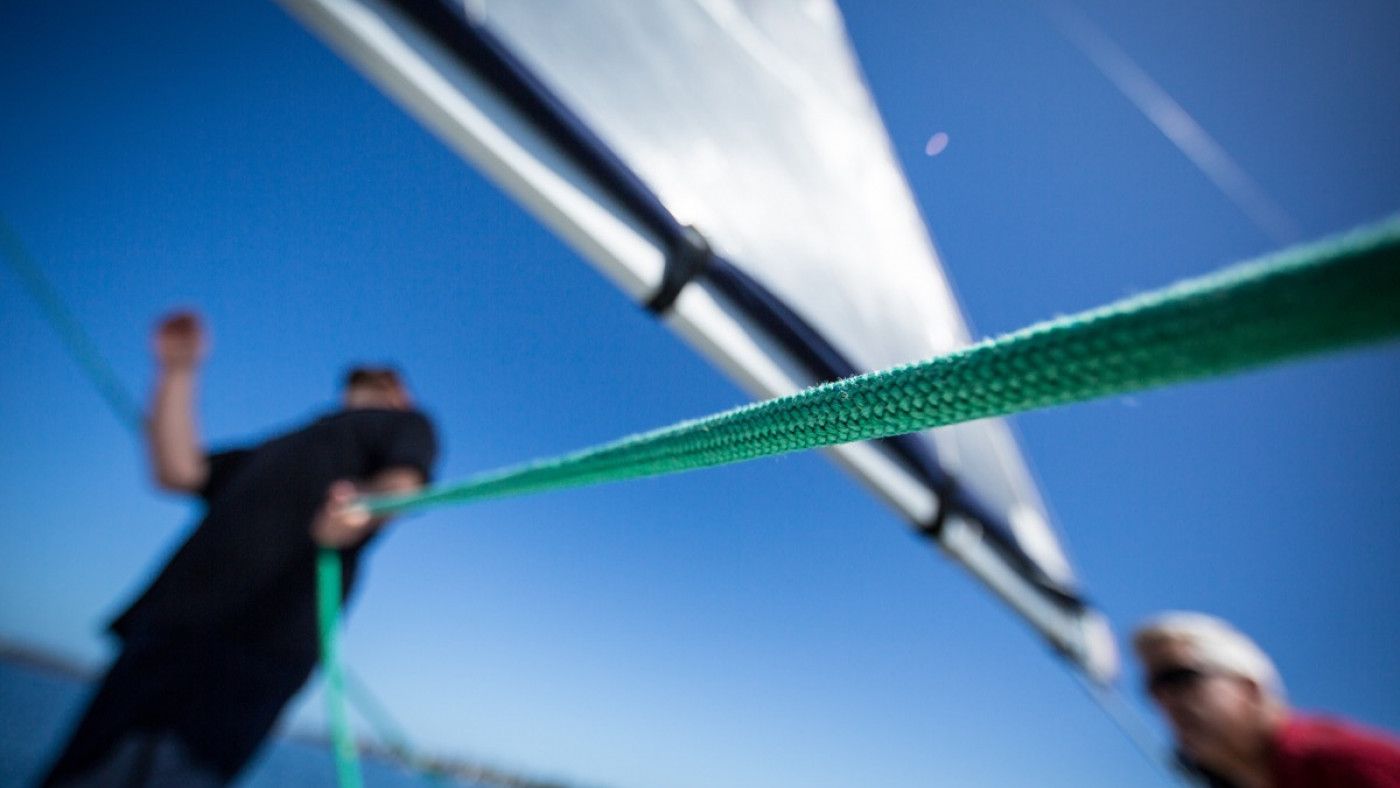
Don't own a boat, but want to learn to sail? In this article, I'll share some ways that will actually help you to learn to sail and that are either cheap or free.
Here are some great ways to learn how to sail on the cheap:
- Two free online courses by NauticEd
- The Skipper Rank course from NauticEd
- The Sailing Basics course from Udemy
- Playing Sailaway - the Sailing Simulator
- Taking just two sailing lessons
- Taking a 1-day sailing course
- Becoming a ship's mate
- Joining a crew
- Chartering a boat
Now, sailing is a skill, and so it requires practice. I want to be really clear about this: you can't learn to sail by reading about it. You'll have to go out on a sailboat and actually do it .
The first steps are the cheapest - later steps get more expensive. With each step you'll know more about how you feel about sailing. This way, you prevent making a large investment upfront - only to find out it's not for you.
All in all, these steps will cost you a lot less than you might think. A couple of tenners can go a long way here. And it seems like a whole lot of experience to me.
On this page:
(free) online courses, sailaway videogame, sailing in real life, the total cost for getting started, the next step: chartering a boat.
Before buying anything, you want to figure out whether sailing is for you or not. To do this, I suggest to get started on some good free sailing courses. I've ordered these nine tips in a way that makes (financial) sense.
Free Courses by NauticEd
NauticEd is one of the best-known names in online sailing education. And they offer two introductory courses FOR FREE.
Get two FREE sailing courses from NauticEd
You'll get Basic Sail Trim & Rules of Prevention of Collision at Sea . These will give you a good overview of what you need to know before boarding a sailboat.
Paid Courses by NauticEd
After that, I recommend taking the Skipper Rank course .
This course is a lot more advanced and will talk you through sailing a mid-sized sailboat (23 - 50ft). I think it's a great, comprehensive course.
It will go over all the core sailing theory: Weather and Sea Conditions, Anchoring and Mooring, Slip Departure and Return, Communications & Navigation, Coping with Emergencies, Sailing (of course), and many more.
It has over more than 20+ hours worth of material and will give you all the basic knowledge you need to start sailing in real life.
If you're considering taking sailing courses, I recommend reading our in-depth review of NauticEd here . In it, William will use his 20+ years of sailing experience to see how much value you'll get.
After the online courses, you can plan actual real-life sailing lessons that will build on your theoretical knowledge. The lessons are available around the world. I recommend getting at least two sailing lessons to get a feel for the boat and the basics of sailing. More on this later.
Paid Udemy Course
Another good option is the Sailing Basics Course on Udemy.
Get the Sailing Basics Course on Udemy
It gives an excellent overview, but it doesn't go as in-depth as the Skipper Rank course by NauticEd. But it is great value for money, especially if you can get it at that notorious Udemy discount rate. However, if you can't get it, I'd go with the Skipper Rank course.
This might sound silly to some, but to me, it actually makes a lot of sense.
There's a great sailing simulator called Sailaway. It's just your ordinary videogame - you can download it from Steam, and start playing. But it is more of a simulator than anything else. So I thought it might be useful in learning how to sail.
So does it? The short answer is yes.
It really mimics the sailing experience quite well. Also, the tutorials are at the same time sailing theory lessons.
But here, the same goes: it remains theory - until you get out on a boat and do it for real.
Digital is great: it's cheap (practically free) and comfortable. It's great to explore new interests. But after 50 hours of Sailaway, three sailing courses, and just over $ 100, it's time to get real.
You now know some good ways to get started digitally. That's a great start. But as I said earlier, real experience is key. You want to get a feel for the boat, the lines, the wind and the sea. You also want to encounter some situations to apply your knowledge to - otherwise, it will rapidly ebb away. So how to get started in real life?
I suggest, before going out and buying your own boat, you might want to start by trying out some things first. It's also great to sail with someone more experienced at first. Spending time with another sailor is the quickest way to learn.
You have a couple of solid options:
Taking Two Sailing Lessons
Taking a 1-day sailing course, becoming a ship's mate, join a crew.
- Chartering a Boat
How much does it cost to own a sailboat? Read our complete sailboat ownership cost guide for a complete overview of all the ownership costs and the purchase cost of a new & used sailboat.
There are a couple of ways to go about. You could simply register for a sailing lesson using the NauticEd website. You could also hire your own instructor. Sailing lessons range anywhere from $60 - $600. Private lessons are more expensive, but you could get started for about $100 / half day.
If you're a quick study, a couple of sailing lessons will get you a long way - especially since you've already learned most theory. I suggest taking at least two, to cover the most important basics.
Learn more on the cost of sailing lessons in my article here
There are all-inclusive 1-Day Sailing Courses available. You simply rent the boat + the instructor, which is also your captain. You do have to get out to the lake or bay where the boat lies.
An entire day can be quite expensive. Rates vary between $200 - $2000. If this seems like a lot of money, it is.
However, you rent the boat for the day. So most of the times you can bring your friends. Most sailboats can easily carry 4-6 people. Split the cost, and even for a day out on the water, it's not a bad price.
Always check with the captain beforehand how many people you can bring .
The advantage of an all-in sailing course is that you get your money's worth. These instructors are generally very skilled. You might learn more from an entire day on the water with them than from ten sailing hours on your own.
Becoming a ship's mate is a great way to gain experience. Ideally, you know someone who owns a boat. If you don't, however, you could always place a request on the well-known online sailing fora, or at your local sailing school.
Not all sailors like the company, but for some, an extra pair of hands is just what they need. You only need to find them - which shouldn't be too difficult.
Some places to get started finding a captain:
- using Facebook Groups or Marketplace (which is local)
- placing a request on Craigslist
- pinning a message at your local harbor (or your local supermarket or town center) - old-skool
- sending in a request to your local sailing club or school
- place a request on the online fora: CruisersForum - SailingForums - SailNet
There are two industries where skippers are always on the lookout for good crew.
- Sailboats are getting delivered around the world by specialized crews
- Inland and Coastal Water Tourism
You can apply to join a sailboat delivery crew at CrewSeekers . A LOT of people want to do this. If you already have a bit of experience, that's a big plus.
You could also ask around in your local harbor. Just a 20-minute drive away from me lies Harlingen Harbour. It is the kick-off point for a lot of tourist sailing trips on the Waddenzee. A friend of mine asked around and got to be ship's mate for an entire summer, on a traditional clipper.
That's certainly a way to gain a lot of experience quickly.
After all this, you'll know more than you might expect - and you've paid less than you might think.
What you've done:
- Two free online courses
- One or two paid online courses
- Unlimited hours in the sailing simulator
- A couple of days as a ship's mate
- 1-2 (private) sailing lessons
What you've learned:
- basic sailing theory - sail trim, navigation, rules of the road, safety
- basic sailing skills - maneuvering under sail, reefing, hoisting the main, setting a course and maintaining it
- experience - 20-30 hours of real sailing experience
Total cost: under $500.
I think that's not too bad at all.
The next step, of course, is chartering a boat of your own. You can literally charter sailboats all over the world. In some regions, however, you do need a captain's license. The charter company could also require paperwork, exams, or experience.
Chartering a boat is an amazing experience, and if you're ready for it, I recommend you check out my boat charter recommendations . It's easy, cheaper than owning a boat, and the captain's optional. In my opinion, it's the best way to get started on a budget.
All in all, there are a couple of great ways to get started with sailing cheaply. In this article, I've mentioned the ones that seem most practical to me. If I started sailing today, this is how I would do it.
In this particular order, there is really no downside. You start with not spending any money at all, and gradually work your way up. With each step you'll learn more about your particular interests, and how much money you are willing to spend on it.
But the most important thing? Just get started. Right away - why not?
Get Started (and Save Money)
I have written a detailed e-book that contains actionable step-by-step lesson plans for different budgets and situations. This book will save you hundreds of dollars, hours, and a headache. You can check out my e-book here. Please do. You will support our work, and more importantly: it will help you get started much quicker and cheaper.
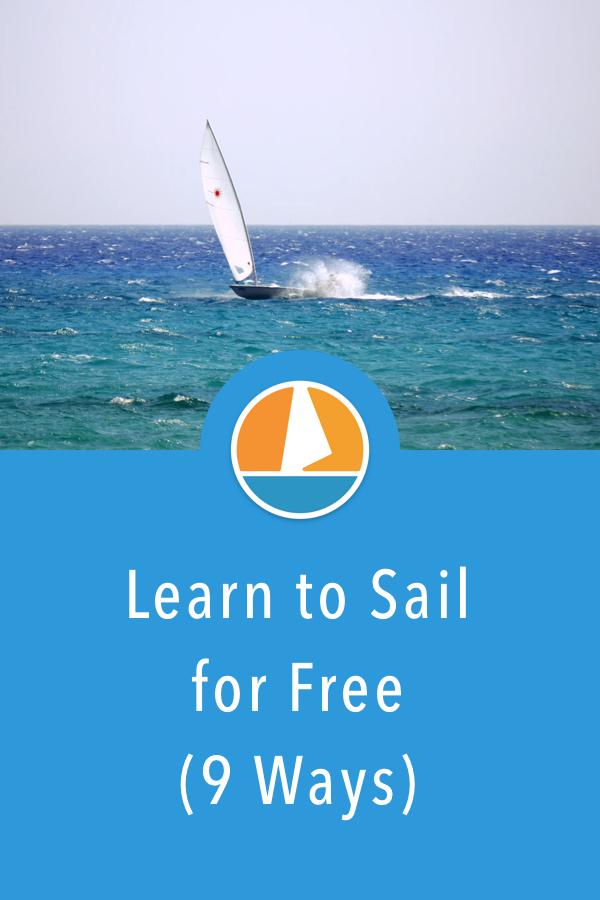
Nice article, and yes Friesland is a great place to learn sailing, with big lakes and opportunity to go onto the IJsselmeer and Waddenzee. You forgot one way to learn, which is with the Sea Scouts, where I learned it together with other rascals my age. Their little metal boats, called ‘Lelievlet’, are total fool proof, and sail pretty good under all circumstances.
may the wind be with you, Bas
Are individuals with PTSD, depression, or other mental health conditions prohibited from owning and operating a sailboat?
Hi Dennis, Not that I know of.
David Warshowsky
Hi Dennis, I enjoyed your article very much. If you’re in the NYC/Northern NJ area, SEAS (Society for the Education of American Sailors) Bergen and its sister chapters offers very affordable sailing instruction from basic sailing up to keelboat sailing on the Hudson River in Haverstraw, NY.
Bergen chapter teaches basic sailing over 4 evenings in the classroom (may be virtual due to Covid) and 2 full days on the water using 15’ sloops.
For more info: https://www.seasbergen.org/
Thank you Shawn, this was a great read, very insightful, many great ideas, inspirational, uplifting and optimistic! I have the sailing bug and your article was JUST what I was looking for.
Christopher Gong
This is a great article for someone like me who is trying to learn to the sail from the beginning. I have a couple of questions I hope I can get answers from you. Thanks a lot.
If I take on-the-water training classes from a non-NauticEd affiliated training school , and ask the trainer to endorse/verify my on the water traing hours (say 32 hours) in my NauticEd logbook, do they usually will do this? If they are willing to, how is this gets done and what is the process involved.
If I plan to get ASA certification 101, 103 etc myself, is there a way that I can add my certificates for the ASA courses in my NauticEd resume? Seems to me that NauticEd resume only allows one to log in their sail trips and not anything else.
sailawaynyc
Useful information posted here!
Leave a comment
You may also like, how much sailboats cost on average (380+ prices compared).
Turns out that owning a sailboat is pretty affordable. OK, it isn't cheap, but it can absolutely be done on a budget. In this article, I'll show you exactly what to …
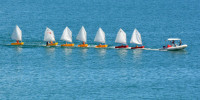
How Much Do Sailing Lessons Cost?

How To Live on a Sailboat: Consider These 5 Things

How To Live On a Boat For Free: How I'd Do It

COMMENTS
Learn to Sail. Your dream to learn to sail is close to becoming reality. Find a school, take a course and set off on your new adventure. ASA has everything you need to sail confidently and safely and you can start right now. We have compiled a list of tools and resources that will help you learn the basics of sailing before you get out on the ...
Basic sailing techniques: There are a few basic sailing techniques that every sailor should know. These include tacking (turning the boat into the wind), jibing (turning the boat away from the wind), and trimming the sails (adjusting the sails to catch the wind). You should also be familiar with the points of sail, which describe the different ...
7 easy steps to get into sailing: Focus on learning the theory first, focus on practice second. The essential sailing skills are sail trim, navigation, and boat safety. Start out using (free) online resources or Sailaway simulator. After that, gain experience by taking at least a couple of sailing lessons.
The best sailing courses for beginners include NauticEd's free and paid courses, ASA 101, and RYA Day Skipper Theory. ASA's First Sail is designed to familiarize you with the basics of sailing in a fun and engaging way. Udemy courses, BoatUS Foundation Courses, and Offshore Sailing School complete the list.
Port = Left of the yacht. Starboard = Right. Bow = The front of the yacht- the pointed end. Stern = The back of the yacht - the wide end. Main sail = The big sail. Jib = The small sail at the front of your yacht. Mast = The main beam holding up your sail. Boom = Pole running at a right angle from the mast. Line = Rope used on board your yacht.
Here are some beginner sailing tips for making sure you have a safe, fun, and successful voyage. 1. Pick a day with favorable conditions and dress appropriately. Depending on your area, good conditions come in a variety of shapes and sizes. Generally, you want fairly calm seas and lighter rather than stronger winds.
Understanding the basics of sailing. For beginners, learning the fundamentals of sailboat handling and terminology is crucial. Discover the various parts of a sailboat, such as the mast, rigging, sails, and rudder, and understand how they work together to catch the wind and propel you forward. Read our top notch articles on topics such as ...
This is step one in your journey to explore the world under sail. The foundation for all of your sailing education begins with this course. ASA 101 - Basic Keel Boat Sailing. Able to skipper a sloop-rigged keelboat of approximately 20 to 27 feet in length by day in light to moderate winds (up to 15 knots) and sea conditions.
Sailing a boat is a remarkable experience that offers a sense of freedom, adventure, and connection with nature. By following the steps and tips outlined in this guide, you can embark on a rewarding journey to becoming a skilled sailor. So hoist your sails, catch the wind, and let the open waters lead you to new horizons.
Take a look at some of these additional sailing skills. Practice Tying Knots. For thousands of years, sailors have used times where it is cold or raining by doing things like tying knots. Knots are important on a sailboat and you will need to learn at least some basic sailing knots to sail at all. Sail Safely.
With the wind at 120 degrees, we're on a broad reach. Sailing directly downwind is called running, or running before the wind. Once the wind is directly astern, we are running before the wind. When the wind passes across the stern of the boat, we jibe, and the sails switch to the other side of the boat.
The best way to describe the handling of a Sunfish is, 'tender,' though it's not difficult to master this little boat. For its size, the Sunfish has a relatively large sail area and a very shallow draft. This boat has a small cockpit and can be controlled easily by a single person. ... It's possible to learn how to sail on this boat ...
Spring and fall usually have the best winds for learning. During the summer winds can be light from late morning to afternoon, when breezes coming off warm shores across cooler waters start to kick in. But even if you don't have much wind, there is still a lot to learn. 4.
Join me on a comprehensive sailing lesson. I teach you the basics you need to know to begin sailing, from vocabulary and parts of the boat to getting underwa...
Embark on a lifetime of adventures with Nautilus Sailing, America's premium learn-to-sail ASA sailing courses. The best way to learn. Destinations. Sea of Cortez, Mexico; Grenadines, Caribbean ... YACHTS We are the official sailing school for Dream Yachts, the largest charter company in the world.
Learn to Sail. Sailing consists of five fundamental skills to be learned independently, then used in conjunction. Here, you'll learn what those skills are and how to master the ….
GYBE: (jibe) when sailing with the wind, to move the sails from one side of the boat to the other by moving the stern through the eye of the wind. WINDWARD: the direction that the wind is blowing from, also upwind. LEEWARD: the direction that the wind is blowing toward, also downwind. LINE: a rope on a boat.
The name for adjusting the sails using the sheets is trimming. Trimming is done to create the best shape for the direction you are sailing in. The most important, basic rule when it comes to your sails is that the closer you sail towards the direction of the wind, the tighter you will have to pull your sails.
Choose the best yacht for learning to sail. Once you've gained the necessary experience to sail the open waters with confidence, it's time to look stylish while doing it. By this, we mean you can then choose the type of yacht you want to gain valuable sailing skills on. ... There's no better way to start your sailing experience than on a ...
Smallboat Sailing. Small boat sailing is a simple, inexpensive way to get started in the sport. The fundamental basics of sailing are most easily learned in small boats. Many small boats are designed specifically for youth, and most provide a lifetime of enjoyment for adults as well. Generally, small boats, are under 25 feet in length.
Our practical and theory courses will take you from complete beginner to capable skipper and beyond. Stepping into the world of sailing for the first time is exciting and exhilarating. The courses in the RYA Yachtmaster training scheme will help you learn to sail and build confidence, become a useful crew member and even learn how to skipper a ...
The good news is, it's never too late to learn to sail. Many think sailing requires a lot of money, and they start after they've begun to earn a little more income. But that's not necessary for adults. There are many ways to get on the water without waiting for your boat-owning friends to invite.
Here are some great ways to learn how to sail on the cheap: Two free online courses by NauticEd. The Skipper Rank course from NauticEd. The Sailing Basics course from Udemy. Playing Sailaway - the Sailing Simulator. Taking just two sailing lessons. Taking a 1-day sailing course. Becoming a ship's mate.
Maneuvering under sail is a combination of steering and sail trim. How to maintain a steady course and achieve the best boat balance can be difficult to understand with so many interconnected variables: wind strength, sea state, boat quirks, heel angle. Small boats make it easier to figure out the cause and effect of each adjustment.